Grimaldi, Part 2: Crossing the Atlantic Ocean to Dakar
— Grimaldi, Sailing — 12 min read
February 24 - March 6, 2011
After visiting various ports up the South American coast, it was now time for the big water crossing from Brazil to Senegal. It had been 7 days on board already and now it was to be a 9 day stretch to Dakar across the Atlantic, heading back into the northern hemisphere.
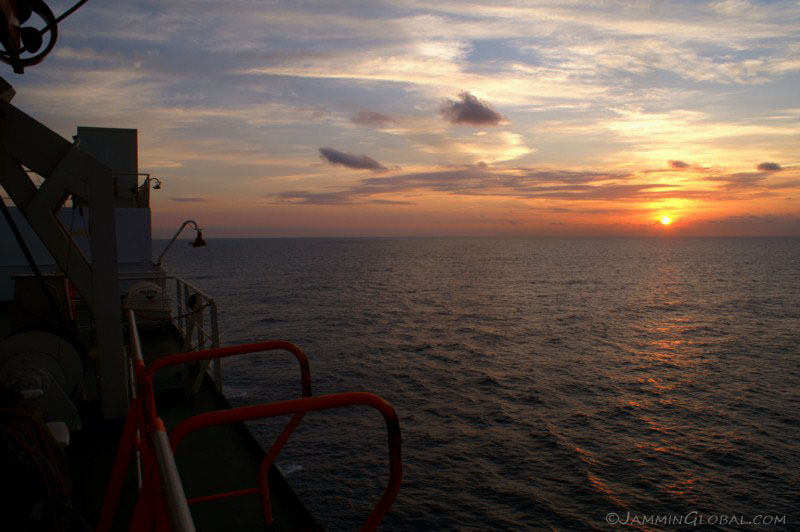
With the ship being the only object on my horizon, the objects in the sky became that much more prevalent. Beautiful sunsets everyday. As we were moving from southern latitudes into the north, I was interested in noting what time the sun went down every day and with the time changes, it was initially after dinner and then became before dinner. On this leg from Brazil to Dakar, while still heading north, we gained time heading east and every few days, it would be announced that the ship's clock would be advancing that night. So, while we lost an hour of sleep, there was no jet lag in crossing the ocean.
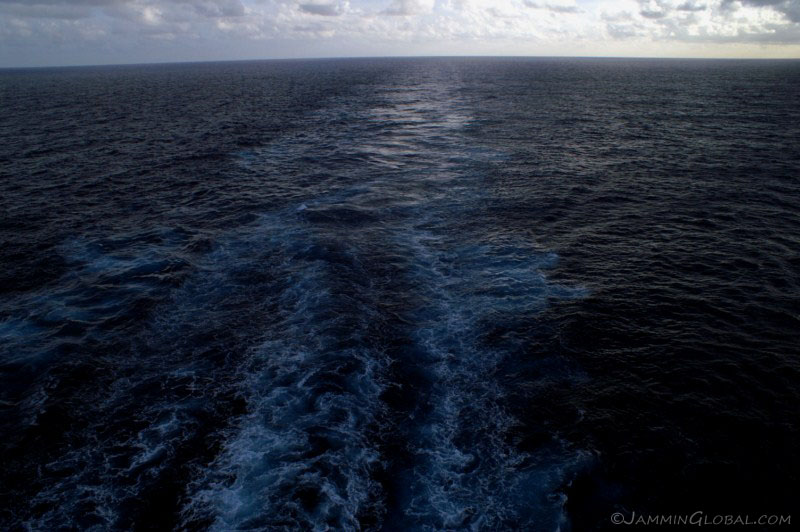
The ship's wake telling where we had come from. I spent lots of time up on deck and looking out across the waters. Being land-dwelling creatures on this watery planet really sunk in as we were rushing from one land mass to another on our floating metal island. After the rocky core of our planet formed 4.6 billions years ago, all this water had to come from somewhere. Small bits were probably present in the formation rocks (like we can see in asteroids today), but they say most of it came from a bombardment of icy comets and collisions with other icy moons, probably perturbed by Jupiter. How lucky we are to live in such a stable period of our Sun's history.
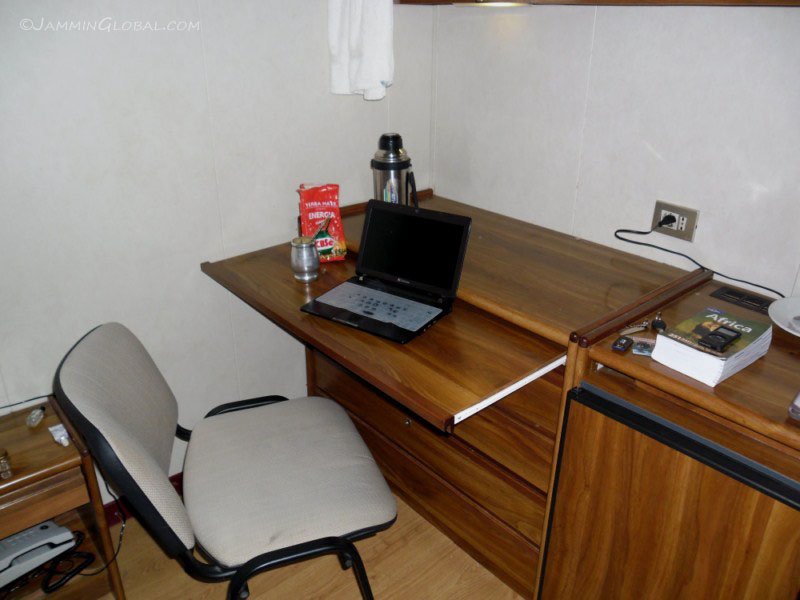
Freighter travel is not designed with entertaining passengers in mind and thus you have to keep yourself busy. Most passengers read books or watched movies, but I had my work cut out. I was a few months behind on my website and ride report, and put in long hours at my 'office' here processing photos, videos and writing. I took breaks by reading up and preparing for Africa.
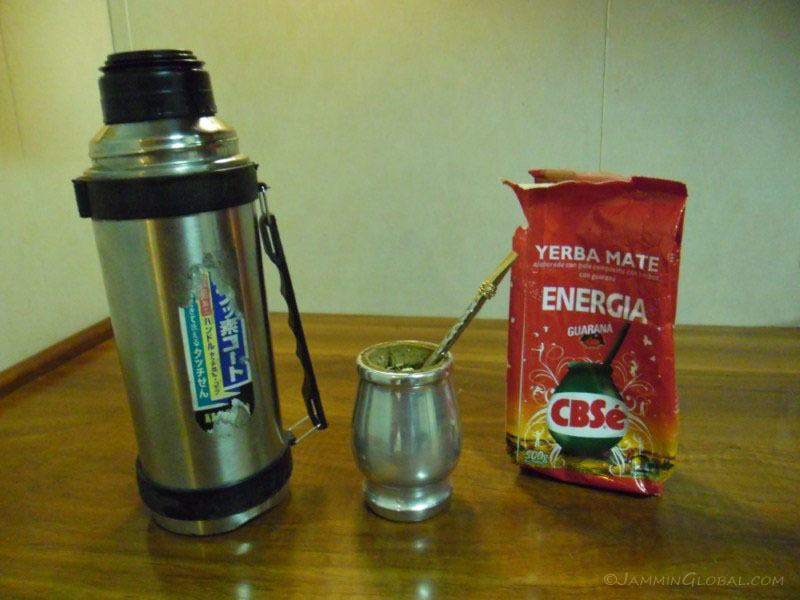
After acquiring this thermos from a man at a petrol station in Argentina, I felt I had to complete the package and bought some yerba and maté (the cup). I got yerba that was flavored with guaraná, an energy supplement, to keep me going.
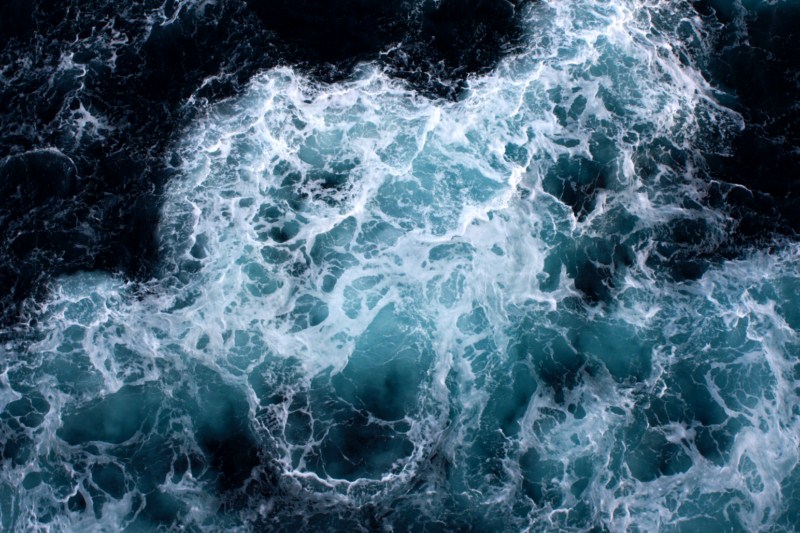
Since my cabin lacked a window, I took frequent breaks to get outside and see that we were still moving. The crests from the disturbance waves of the ship were quite entrancing. Compared to land speeds, the ship's cruising speed on this segment of 13.5 knots (25 kph, 15.5 mph) appears very slow, but looking down at the hull cutting across the waters gives the real sense of speed and appreciation for this massive object to be moving at such a velocity across the planet.
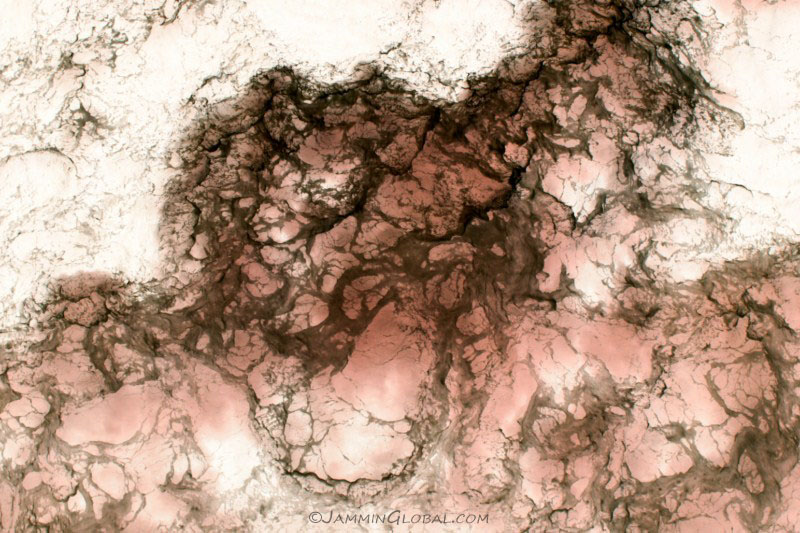
Playing with the colors and inverting the previous photo of the waves produced this negative, which to me resembles a planetary nebula out in space. The dark filaments could be the dust clouds shrouding a bright neutron star that exploded as a supernova. Or perhaps looking out further in the Universe, this might resemble the dark matter filaments and voids that exist between superclusters of galaxies. And remember, we're looking at cresting water. The symmetry in our Universe is so beautiful in showing relations from the ultra-small to the ultra-large.
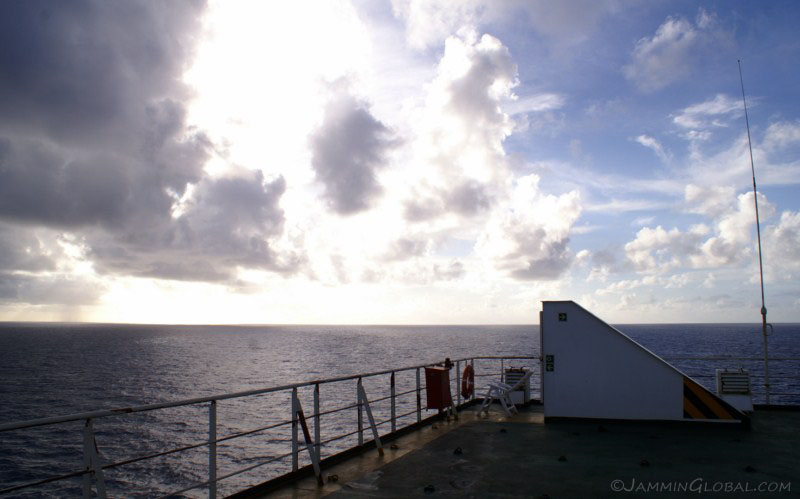
Spending time at the back of the ship...
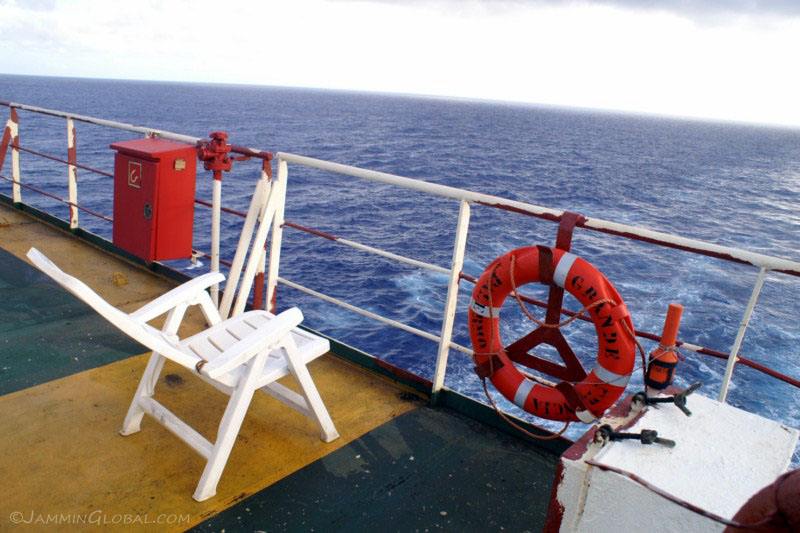
...pondering the beautiful realities that exist. I reflected on the past year and how calm and assured I felt having made it on board this ship, after leaving Chicago and crossing the Americas. Now, a new chapter would unfold once I landed.
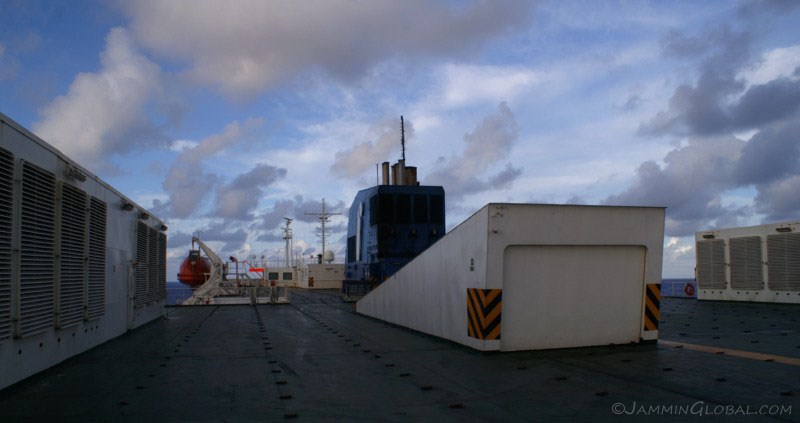
The open space on the top deck was very much appreciated. On the southbound journeys from Europe, the deck is packed with used cars heading for Africa. This is the garage ramp entrance and the ship's engine's exhaust chimney in the back.
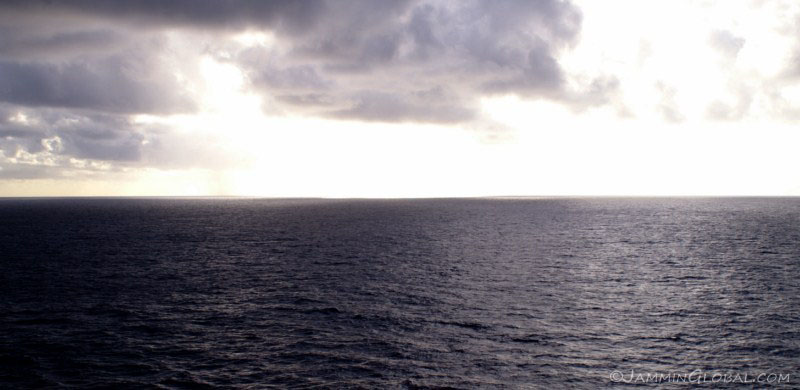
I couldn't get over the blueness of the ocean. The color was remarkable. Deep. While some of the blueness comes from the reflection of the sky, most of it is due to the way the shorter wavelength of blue light is absorbed and scattered to our eyes. Water also inherently has a tinge of blueness to it, which is more evident the deeper the water is.
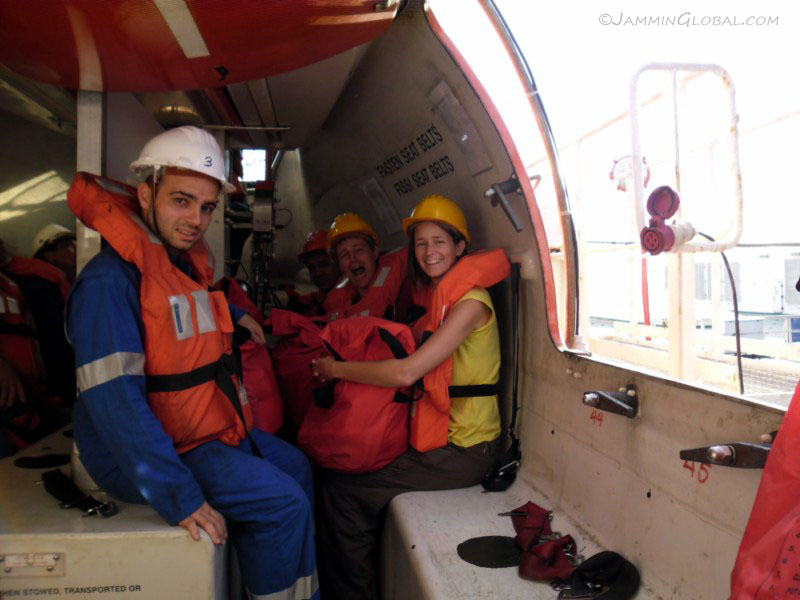
It was time for another safety drill and this time we got to get inside one of the life boats. Michael is feigning panic.
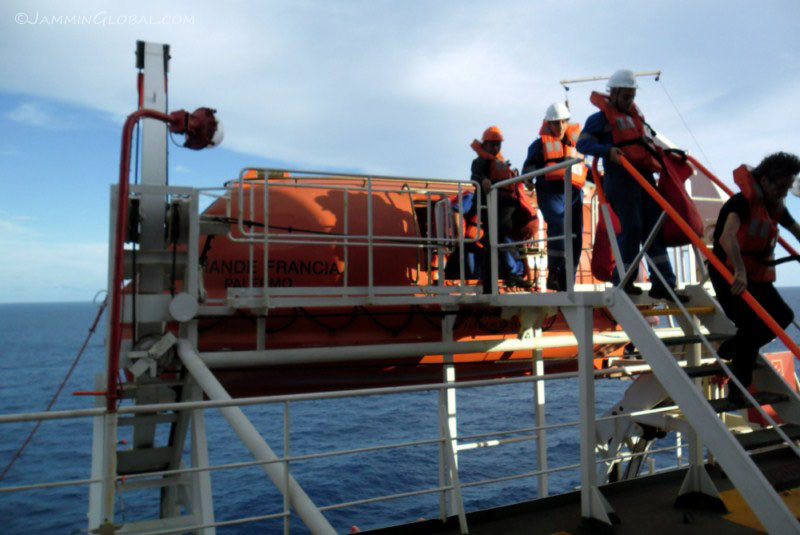
Getting down from the life boat. Besides meal times, this is the only other form of entertainment on board.
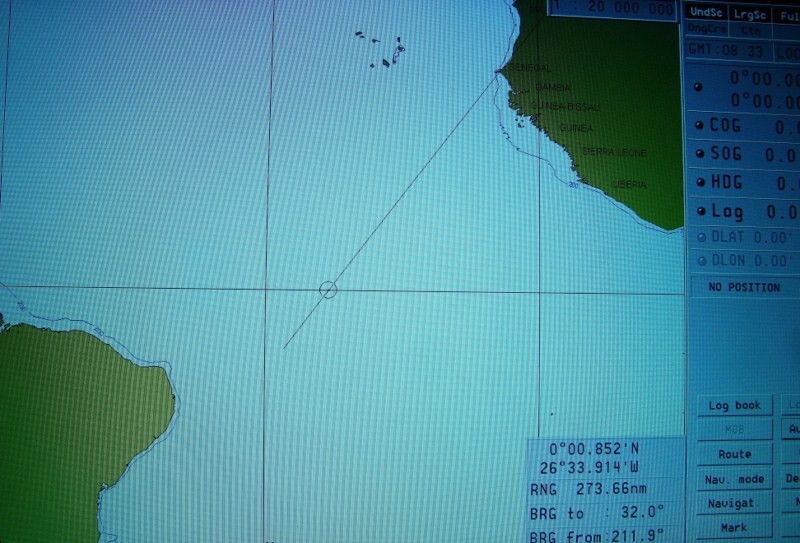
A few days later, we crossed the equator from the southern hemisphere back into the north. As it's obvious from a world map,South America and Africa were once joined, back in the supercontinent of Gondwana (the continents are constantly moving and inevitably join up in a supercontinent from time to time and then break up and drift away to meet up on the other side). A rift opened up about 130 million years ago and after 20 million years, the split was complete and the drifting apart began. We were crossing in 9 days what the continents took over a 100 million years to create, the present South Atlantic Ocean. It's predicted that the next supercontinent will form in 250 million years from now as the continents continue to drift.
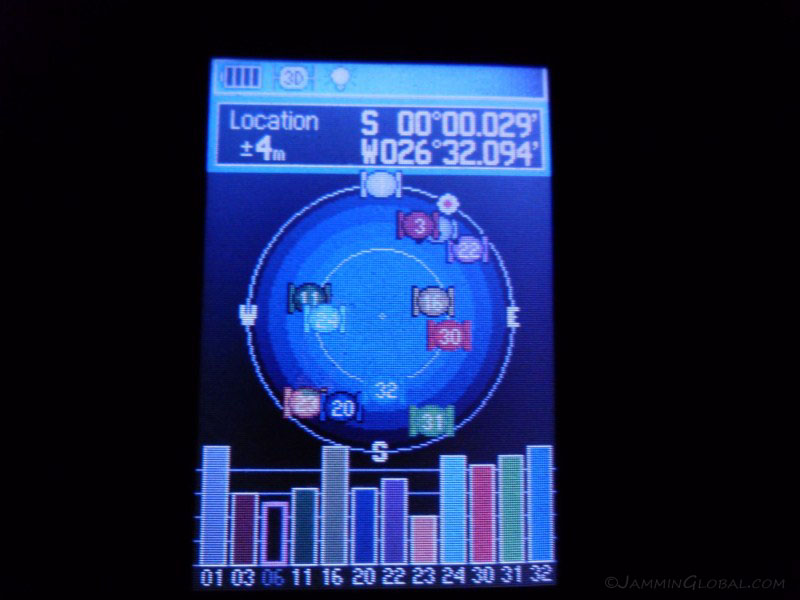
It occurred at 5 am, but I got up to get this shot. We officially went from being at the tail end of the southern summer into the end of the northern winter and with that, it started getting cold outside.
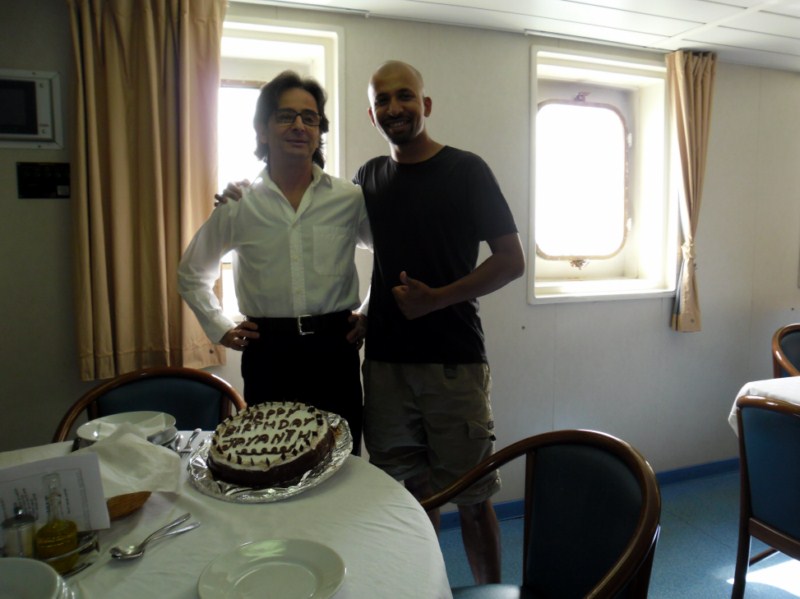
I celebrated my 30th birthday on board, a few days out from Dakar and the crew presented me with a cake. Leaving the twenties would be a memorable moment, along with being out on sea when it happened.
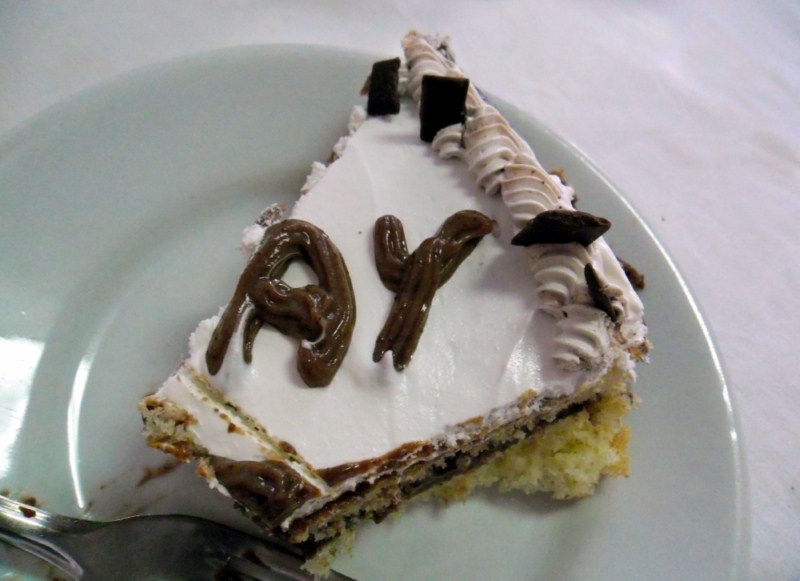
It was super tasty and moist like tiramisu and the other passengers enjoyed the change in dessert from the usual apples.
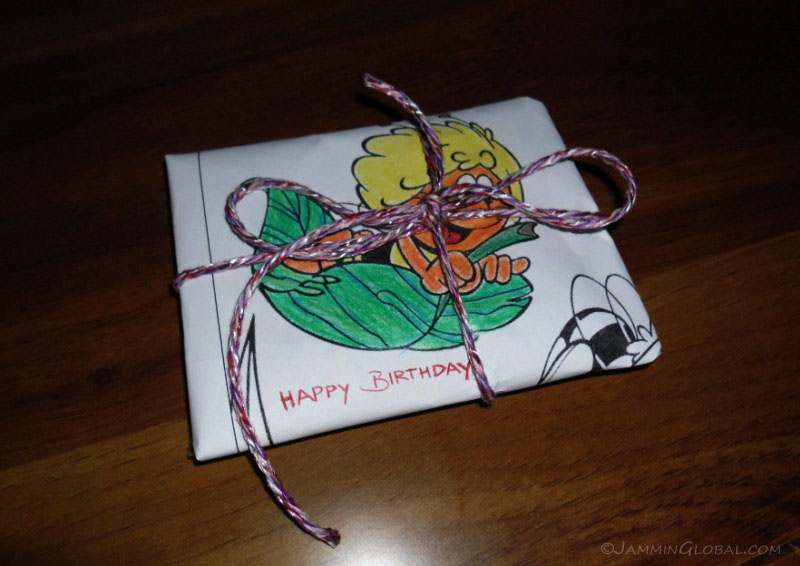
Katie and Michael presented me with a gift...
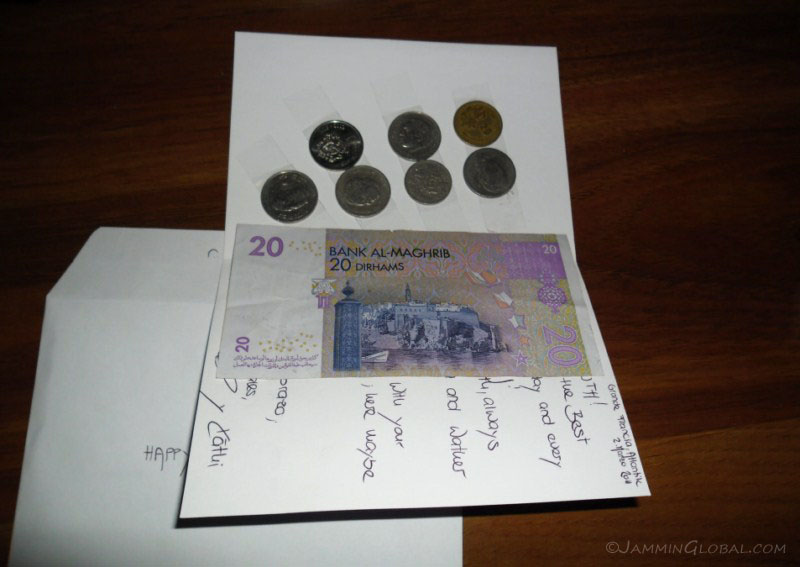
...of some Moroccan Dirhams, as I was planning to head there next. What a nice gesture.
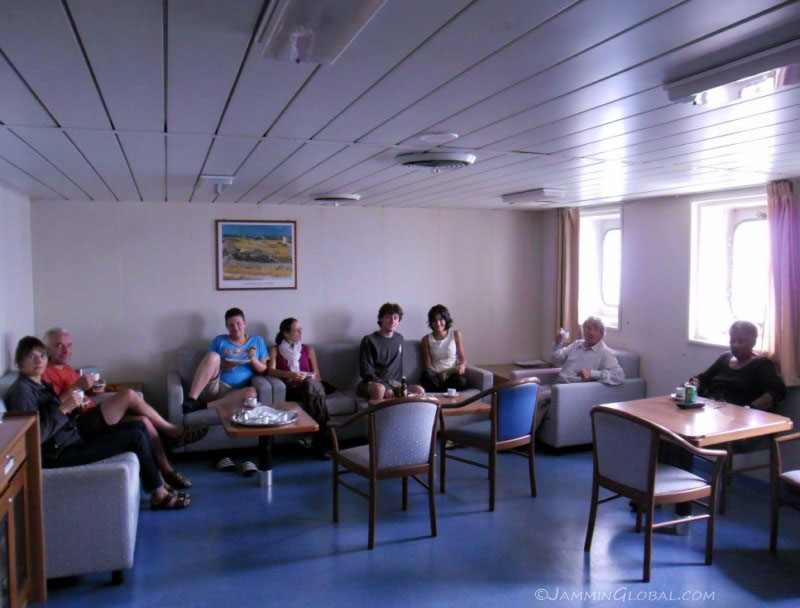
Enjoying cake and espresso in the social room after lunch.
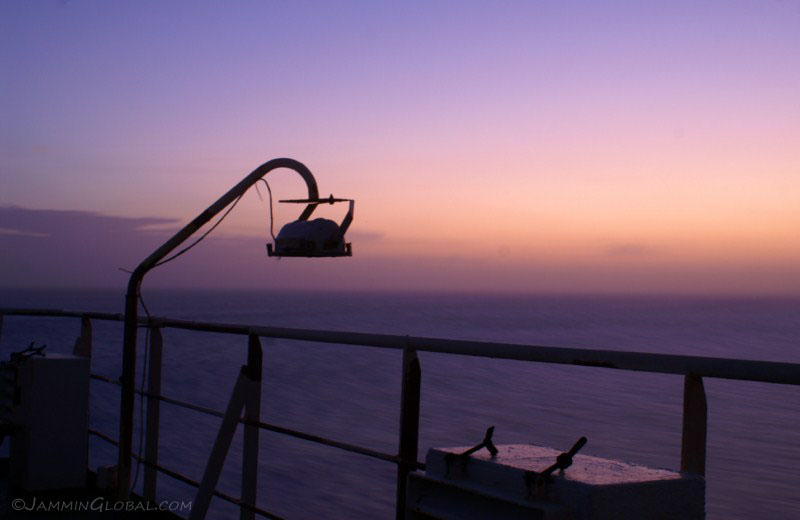
Finishing off the nice day with a birthday sunset.
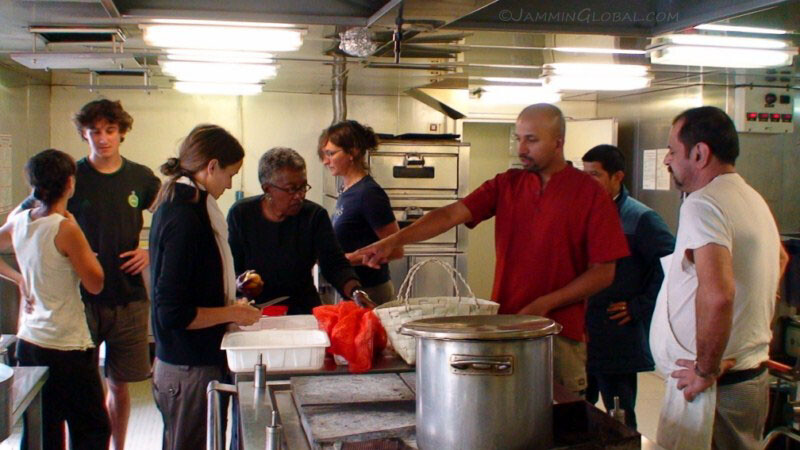
The next day, I was allowed to prepare my chicken curry for dinner in the ship's galley. It took a while to get some of the officers on our side to ask the master (captain) for permission as it's usually a no-go zone for passengers, due to the safety risk. But, being out at sea, things are more relaxed and Nicolai, the cook, was asked to accommodate me. All the other passengers were excited to help out. Jean was amused that after I offered to cook, I enlisted everyone to help. There's no such thing as a free lunch.
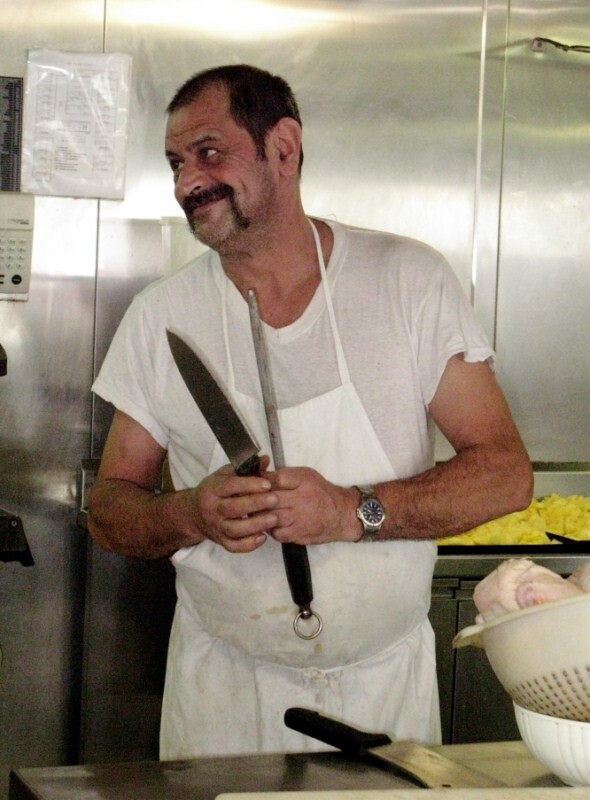
Nicolai was throwing some funny looks and was a little flustered at this intrusion into his kitchen, but he went along with it.
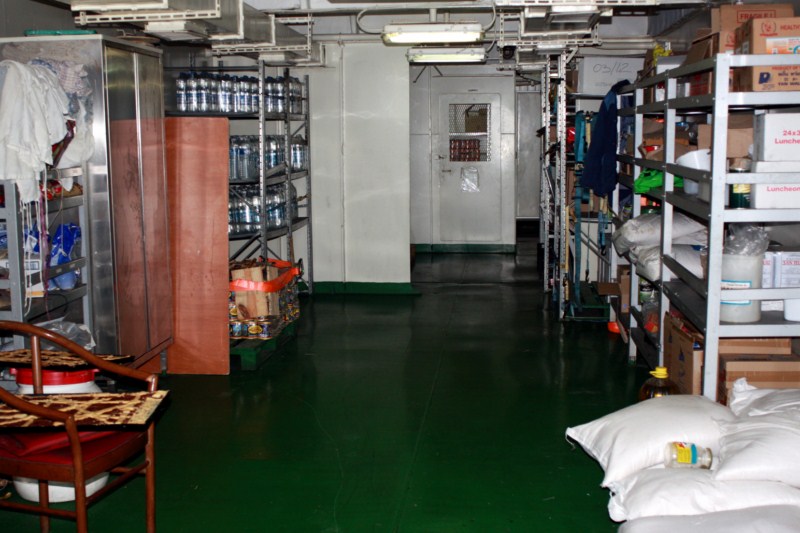
Being in the kitchen, we also got to see the store room, which is usually not part of the ship tour.
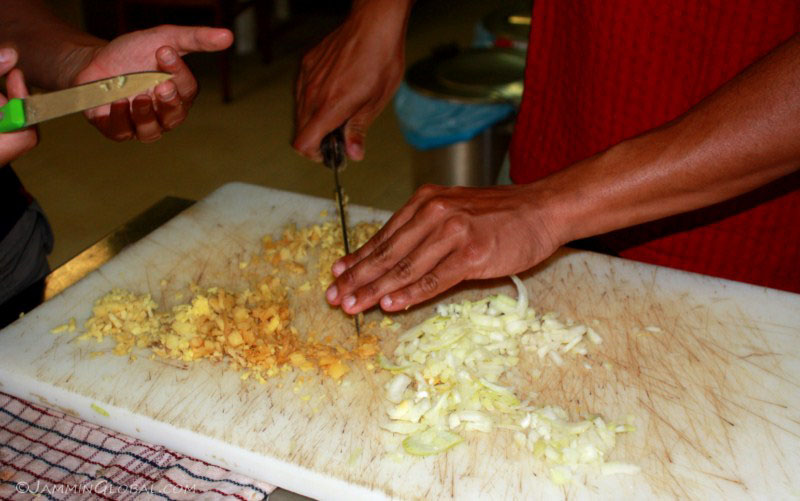
We set about chopping the onions, ginger and garlic. You can never have too much garlic.
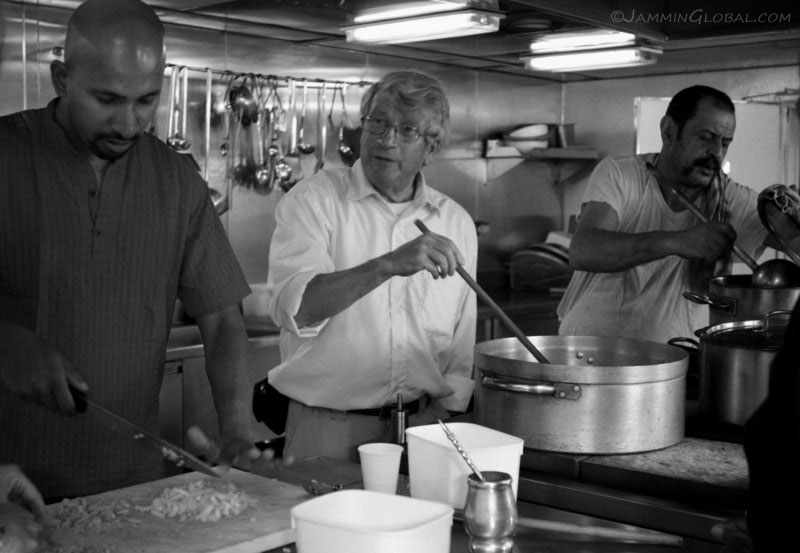
Three cooks at work. I'm chopping the last of the onions, Klaus is stirring the first batch of onions and Nicolai is at work on a pasta soup.
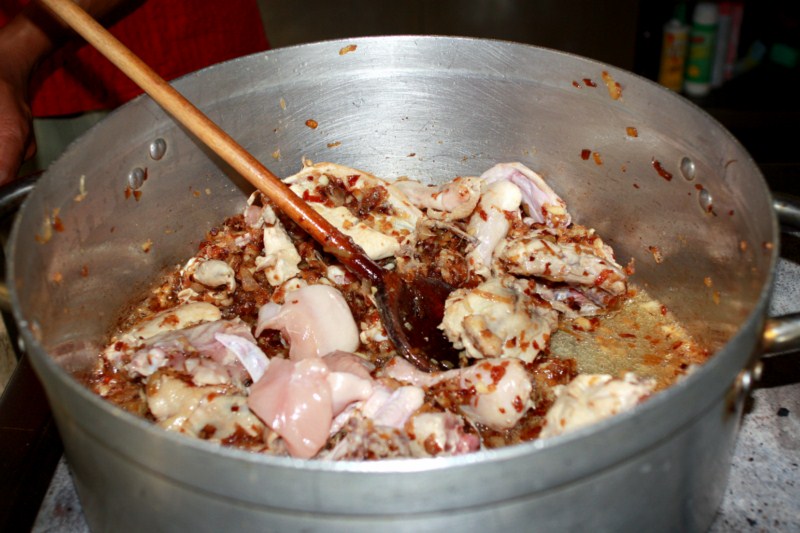
The chicken pieces going in. It wasn't an open flame stove and the weak heat extended the cooking time. No curry ever comes out the same as it's influenced by the cooking vessel and the strength of the flame.
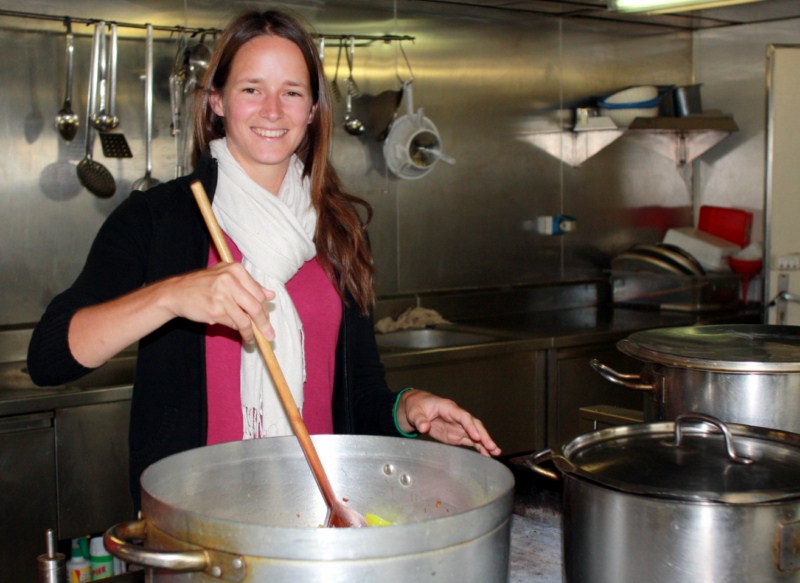
Käthi taking her turn at the curry pot. This dish requires constant attention, so it was good to have so many helpers.
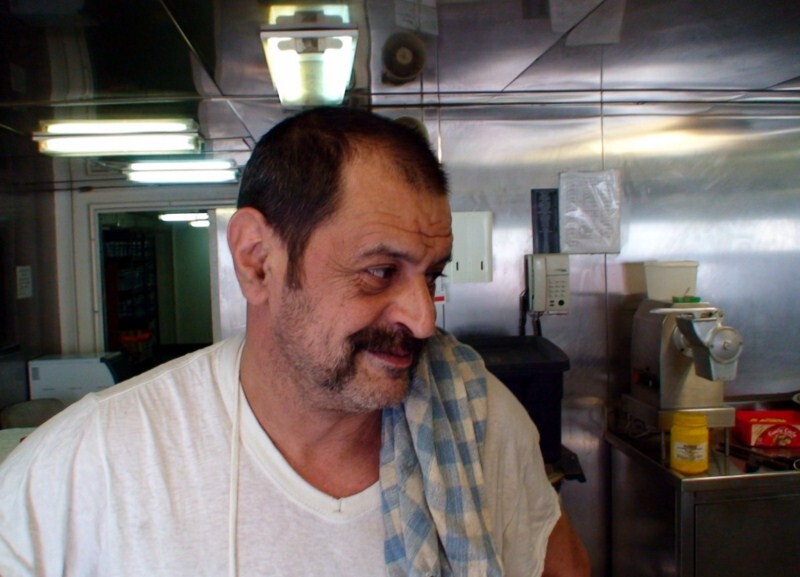
Sandra captured the questioning glances from Nicolai, which I found very amusing. He was watching me very closely at first when I was cutting up the chickens and after he saw that I knew what I was doing, he let me be.
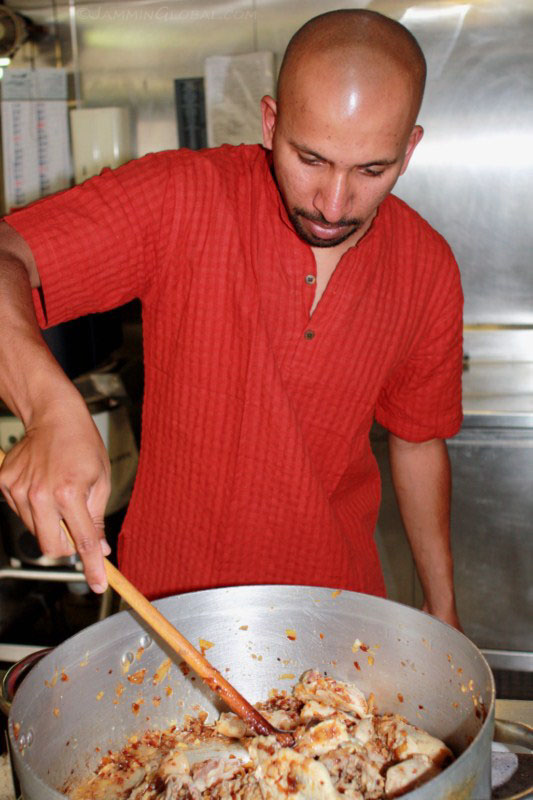
Besides sitting on the saddle of sanDRina, this is my next favorite place to be.
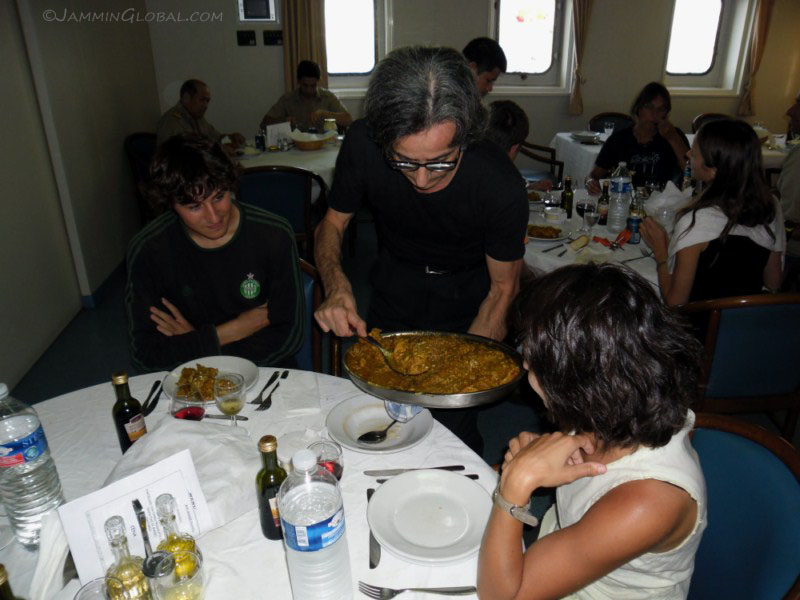
Serving up the Jammin Chicken Curry on the Grande Francia.
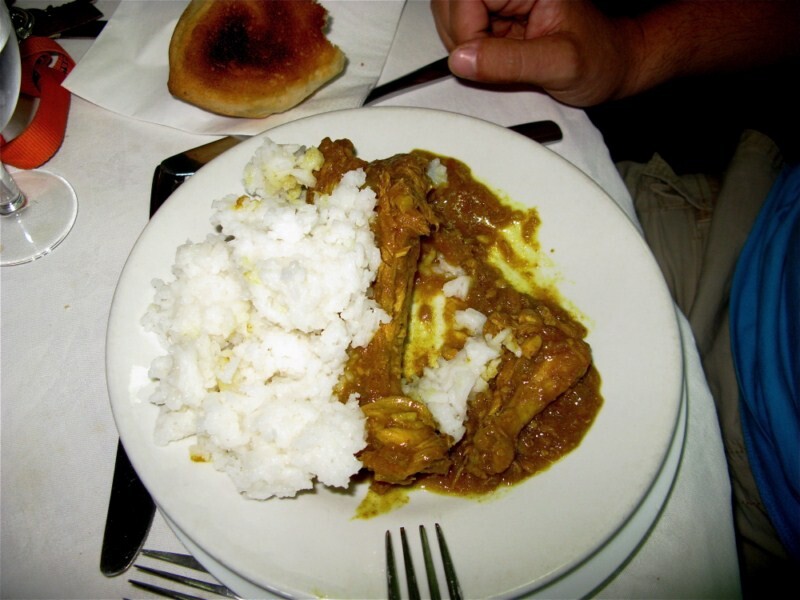
Not my best curry as the tomatoes were lacking and I went too conservative in the spiciness, but enjoyable nonetheless and everyone appreciated the change from the usual Italian fare.
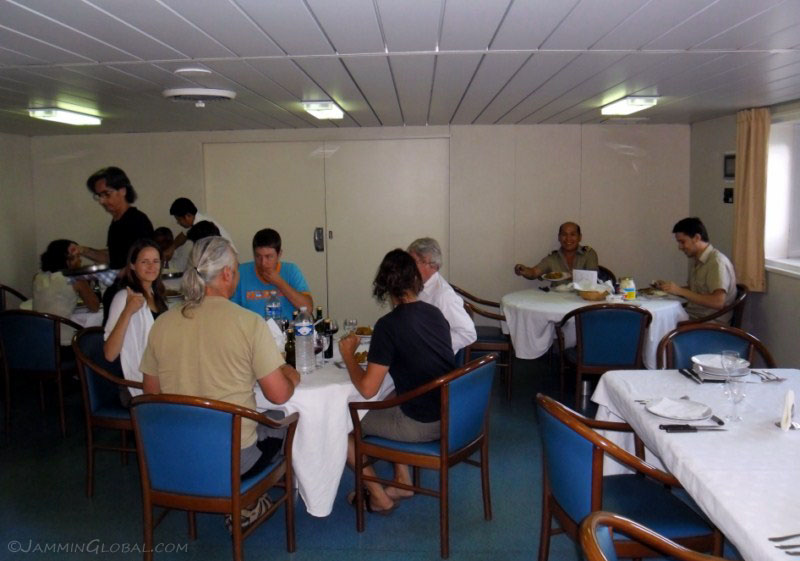
The ship's officers found it amusing and said it was the first time passengers ever cooked on board.
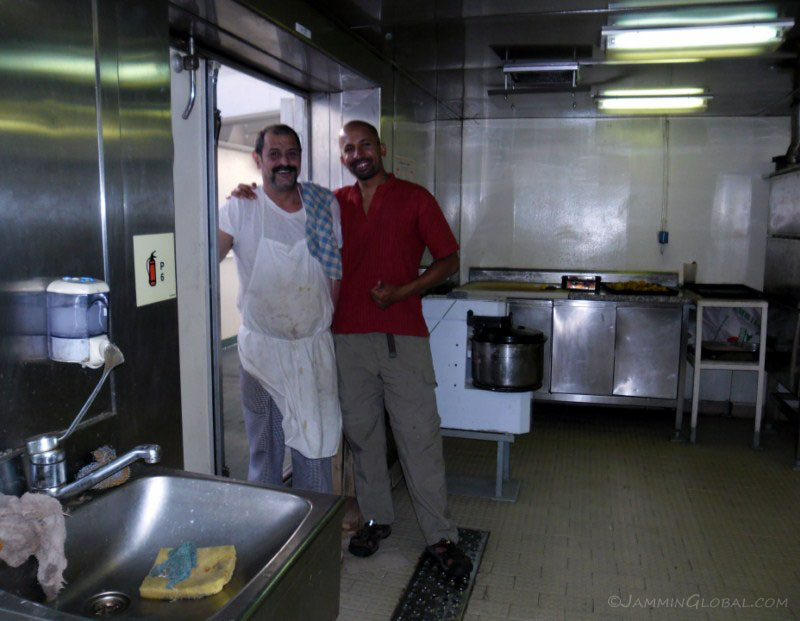
Thanking Nicolai for allowing me to use his kitchen. He said I was now promoted to Second Chef.
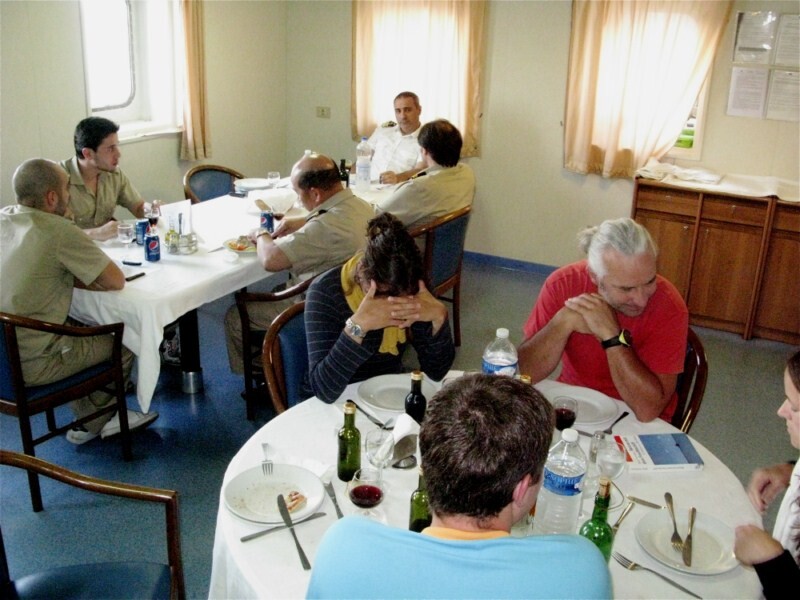
A shot of the officers at the Captain's table.
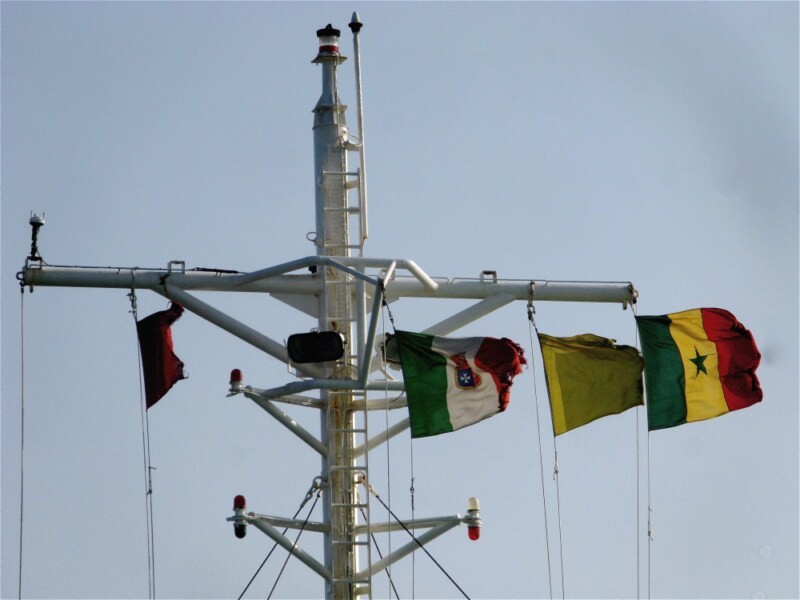
After nine days out at sea, we made landfall at Dakar, Senegal on the west coast of Africa. The ship's mast flew the country's flag that we were heading for, along with the country the ship was registered at. The yellow flag indicated that our last country (Brazil) is one where yellow fever is a risk.
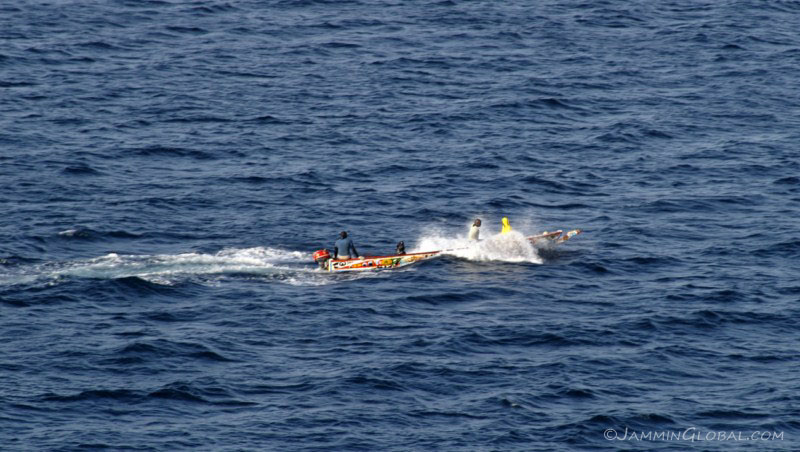
Local boat skimming across the water. When we arrived at Dakar, we had to anchor offshore for two days since the port wasn't ready for us; another ship was ahead of us.
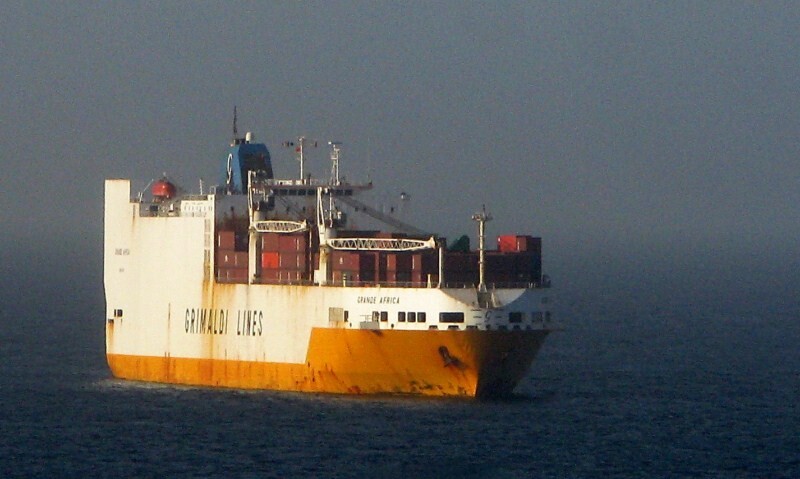
Sister ship Grande Africa arrived just behind us, but she was allowed to berth first.
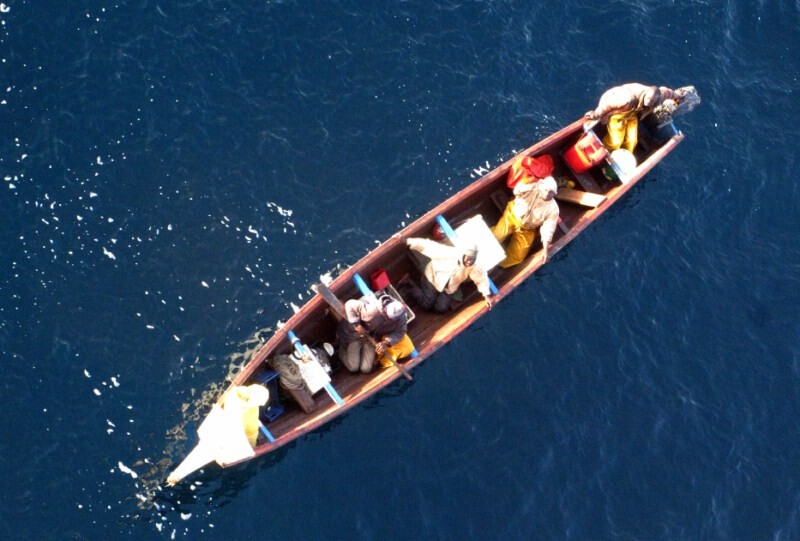
Local fishing boats came up to the ship and Nicolai bought from fresh fruits from them.
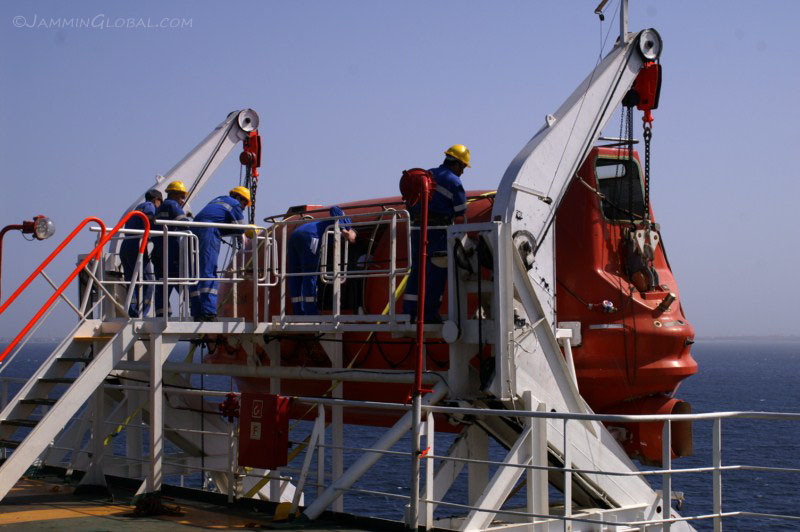
Since we had two days to wait, the crew set out doing some tasks that are not possible while out at sea or at port, such as testing the launch of the life boats.
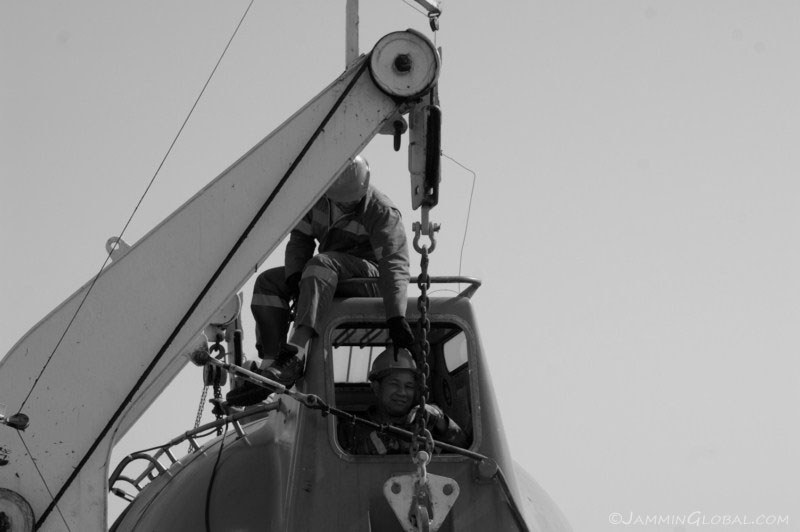
Officer Mantilla in the driver's seat of the life boat.
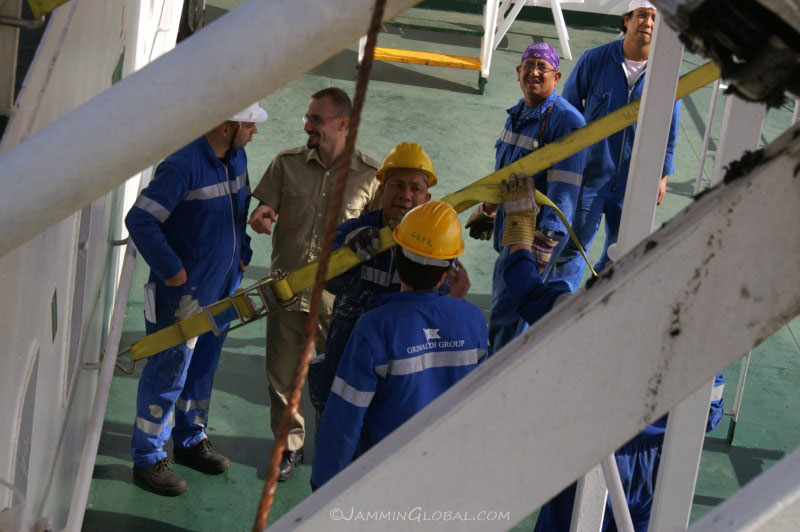
The lifeboat was actually stuck and it took a lot of time to get it free, which didn't bode well for a real emergency. We were told the Chief Mate was upset with the Second Mate (Mantilla, in charge of safety) and all the crew were on deck working on the problem.
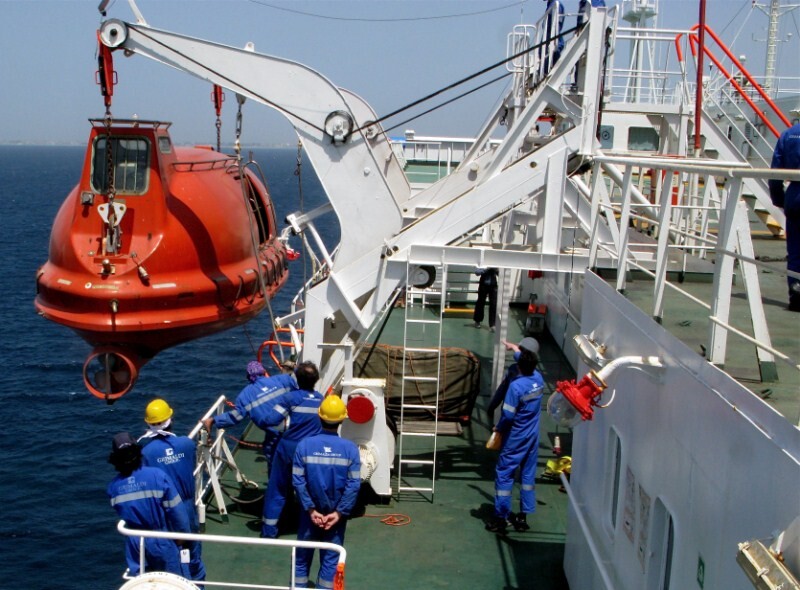
After much work, in the afternoon, the lifeboat's crane was freed and the test continued.
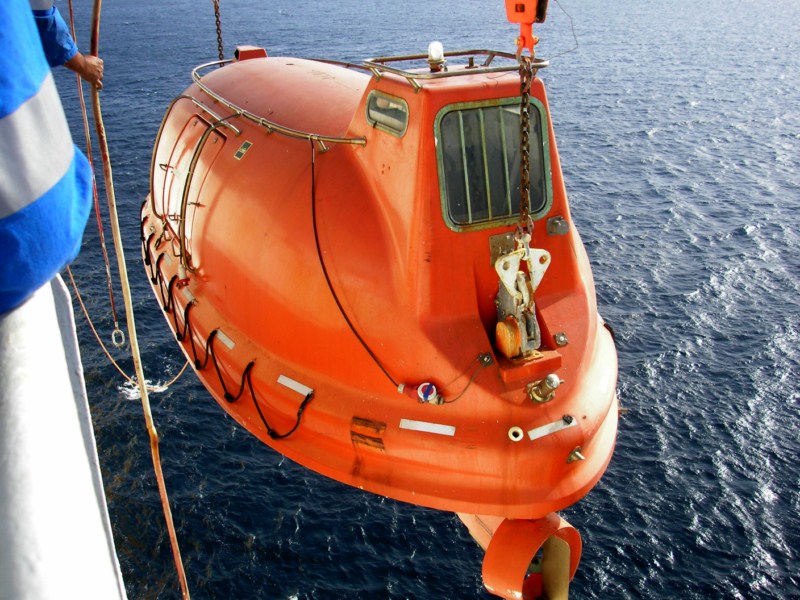
It was good to see that the lifeboats are enclosed as it can get very cold out on the open sea.
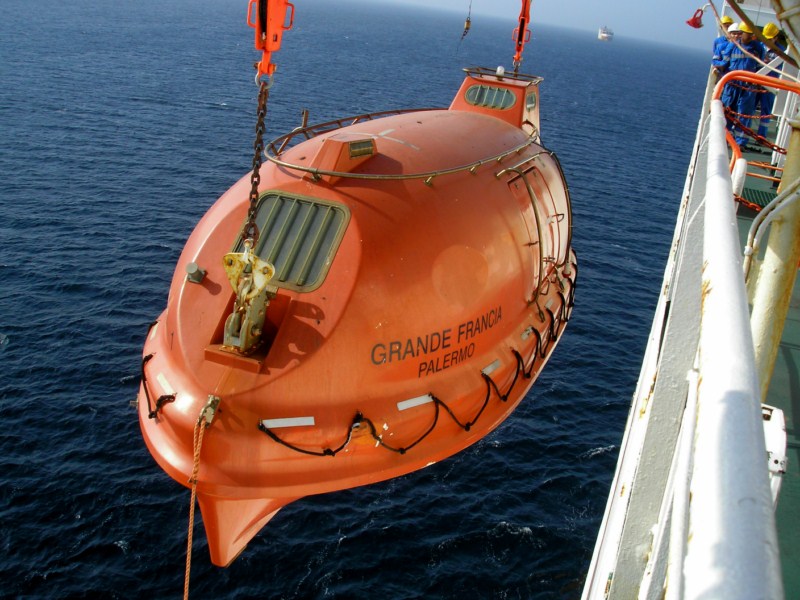
Practice launch.
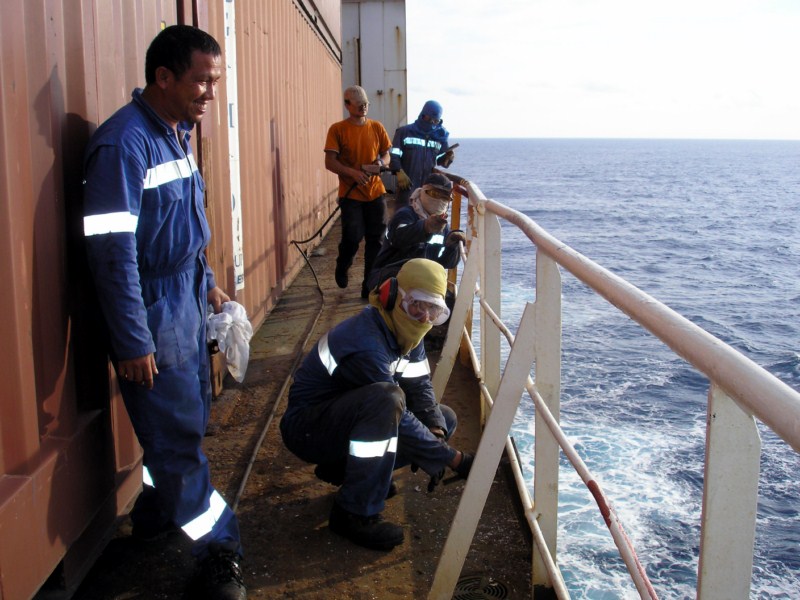
Along with the safety review, the crew was busy banging away and chipping off old paint. I saw a report in the social room where the head office instructed the ship to get in tip-top shape before entering Europe as the environmental policies are very strict and everything had to be clean and tidy as they weren't scoring as high as they wanted in the audits.
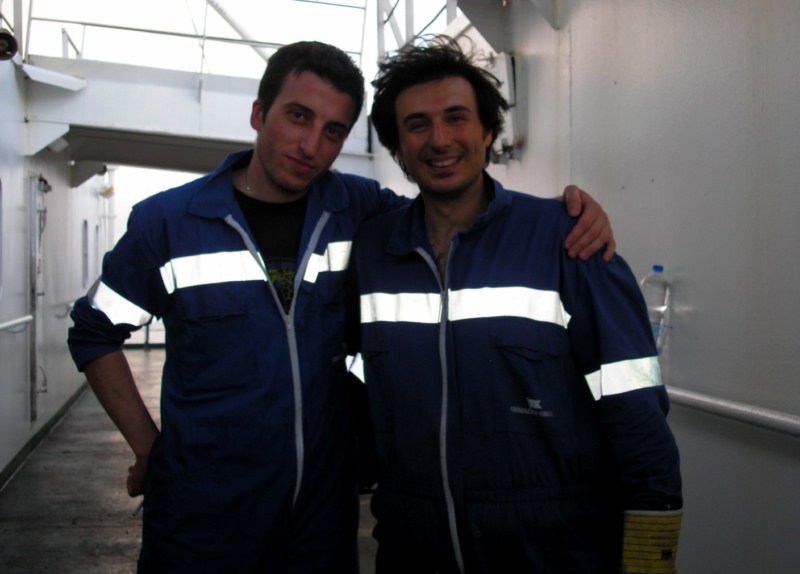
Chief Mate Salvatore on the right with Relief Chief Mate Balsicas. The Chief Mate can also be referred to as the Chief Officer, First Mate or First Officer. Their roles are primarily to manage the cargo on this merchant vessel and the deck crew, along with overall ship safety. They get very busy while at port, dealing with customs and paperwork. However, while out at sea, they are more relaxed and were more often seen in their work overalls than officer uniforms.
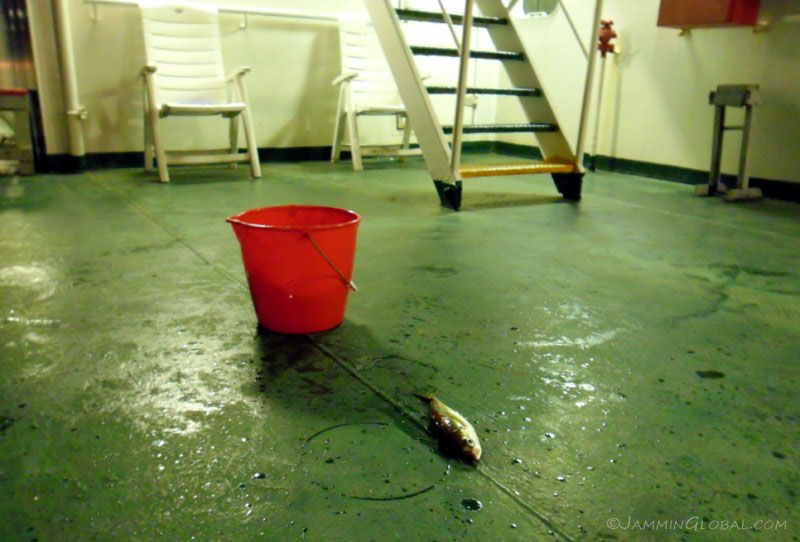
In the evening, I went out for some fresh air and saw a fish lying on deck.
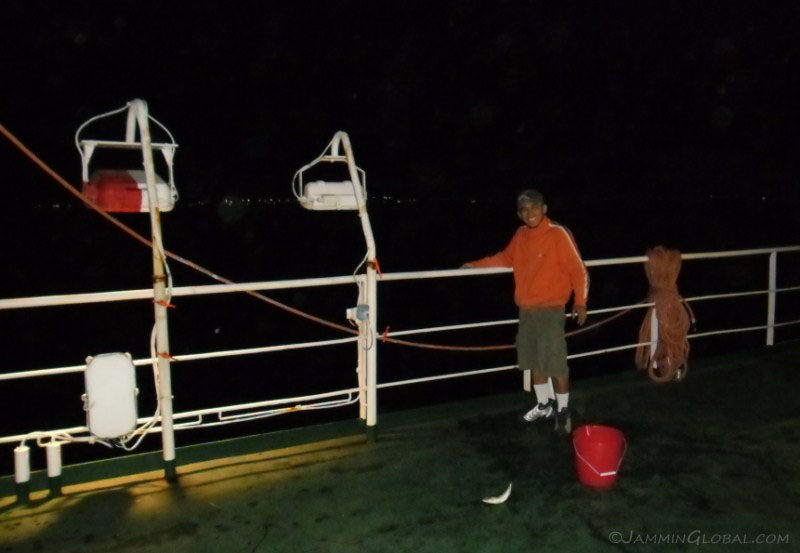
Crewman Raymond was busying fishing in the rich, cold waters off of Senegal. I had seen the crew fishing when we stopped at previous ports and figured it must be their one form of release from being on the ship the whole time.
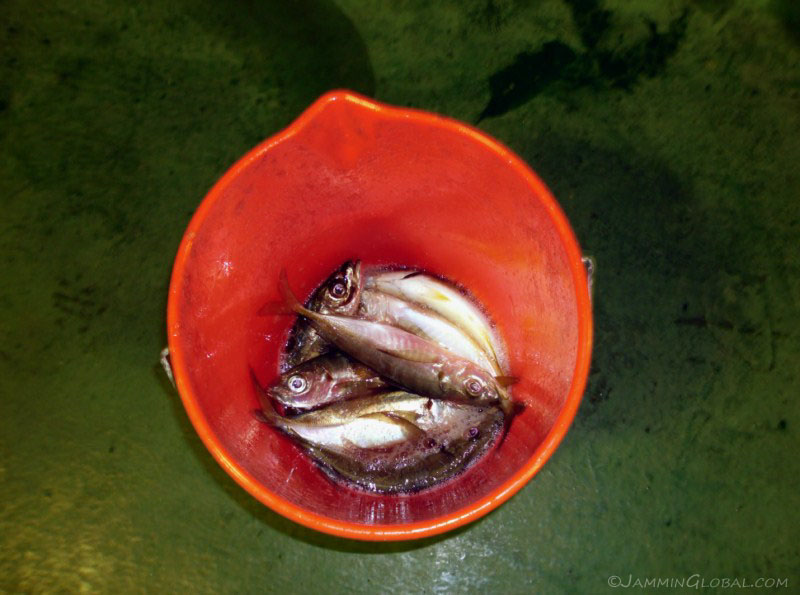
However, Raymond informed me that this time the crew had orders from the master to collect as much fish as possible for a barbeque later. So, every free crewman was fishing all around the ship. In the end, they collected over 15 buckets of fish.
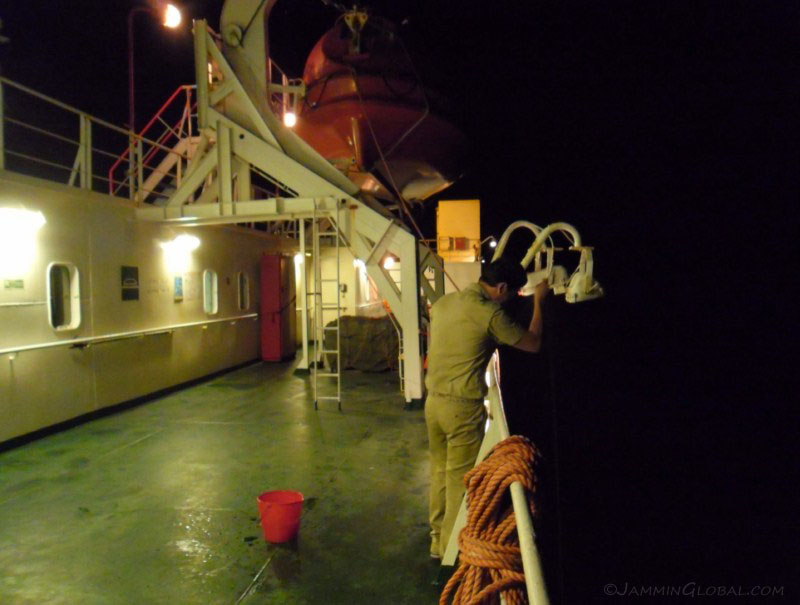
I hung out with Raymond and later Cadet Choru joined us. He's in line to become a chief mate after many more years of experience.
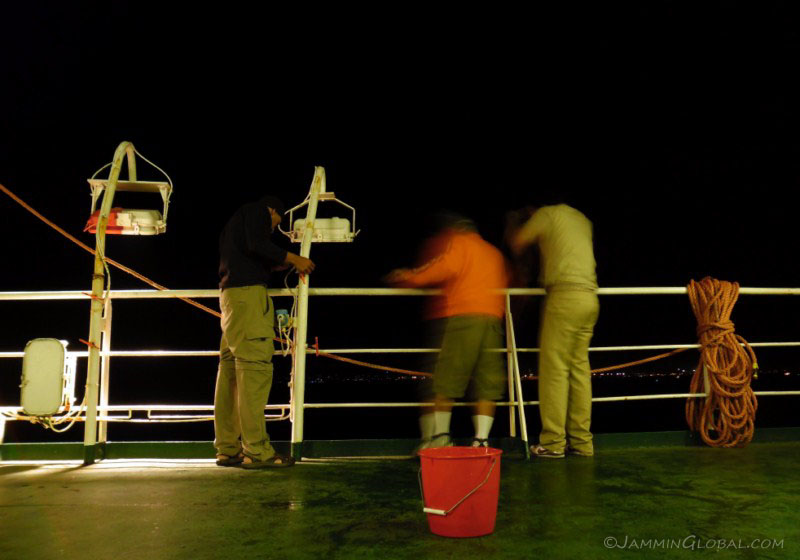
We were fishing with just a line hung down from deck and about every minute or two, a haul of fish would come up.
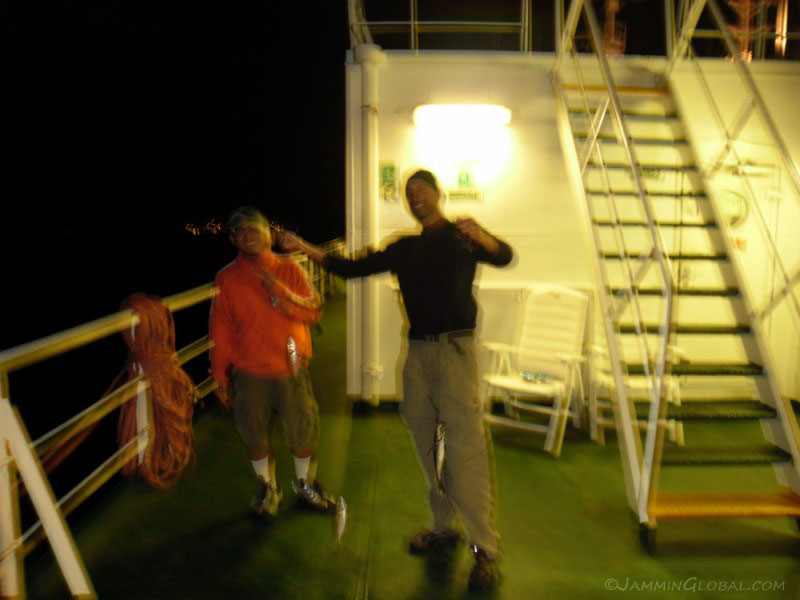
Raymond gave me the line and on my first try, I managed to get the full load of three fish per line. I've never fished before and was thrilled with how easy it was here. After dropping the line, I was instructed to sway the line until I felt a tug, then it was time to haul the catch up. A fun evening.
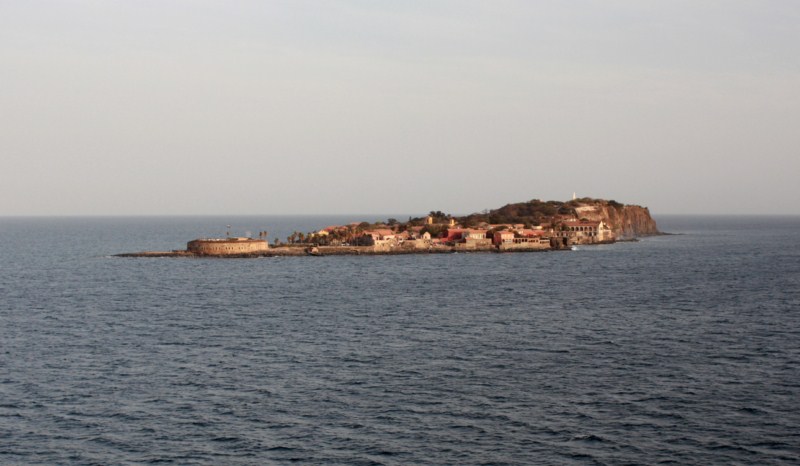
From our boat, we could see Gorée Island, just off the coast from Dakar. It was first settled by the Portuguese, then later the Dutch, British and French. It played a minor role in the overall slave trade.
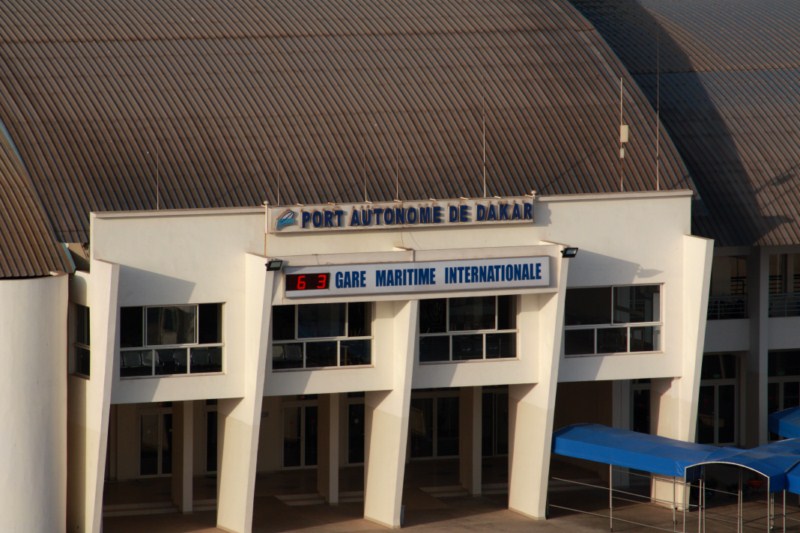
After two days of anchoring off shore, we were allowed to dock at the Port Autonome de Dakar, operational since 1857.
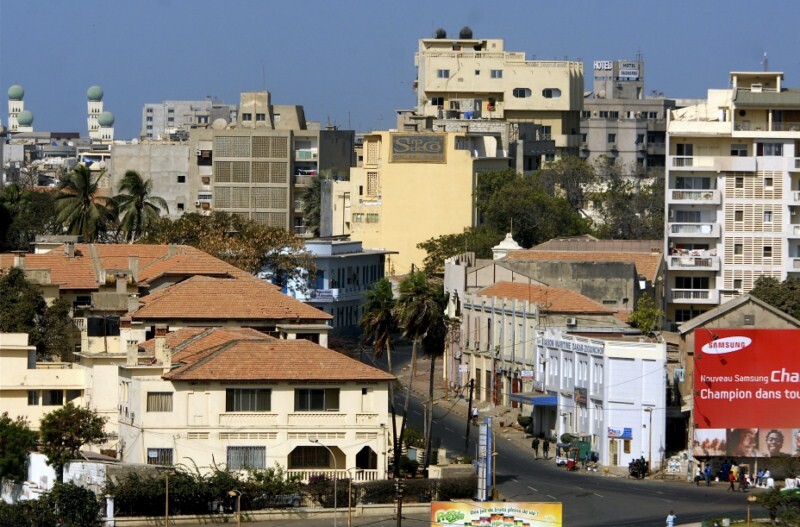
A view of the Dakar from the ship. Its prominent location on the western tip of the African continent ensured its importance to the colonial powers of Europe through the centuries. Before independence, it was the capital of all of French West Africa.
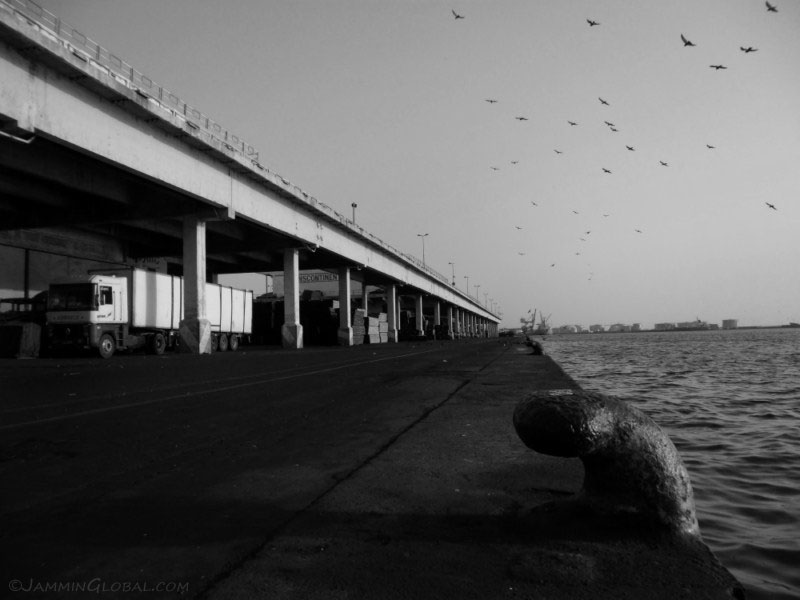
Initially, we were told we couldn't go into the city, but were allowed to stroll around the port, which was deserted except for our ship.
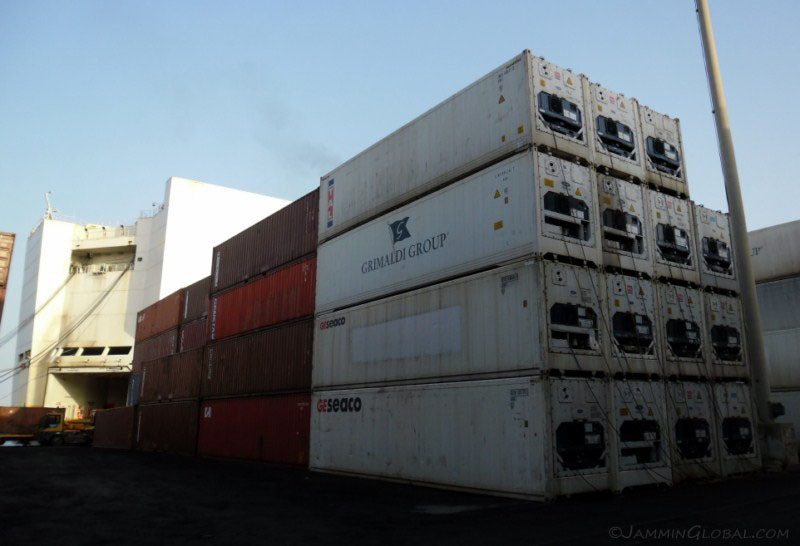
Grimaldi has invested heavily in various West African ports and these refrigerated containers are moving fresh produce from here north.
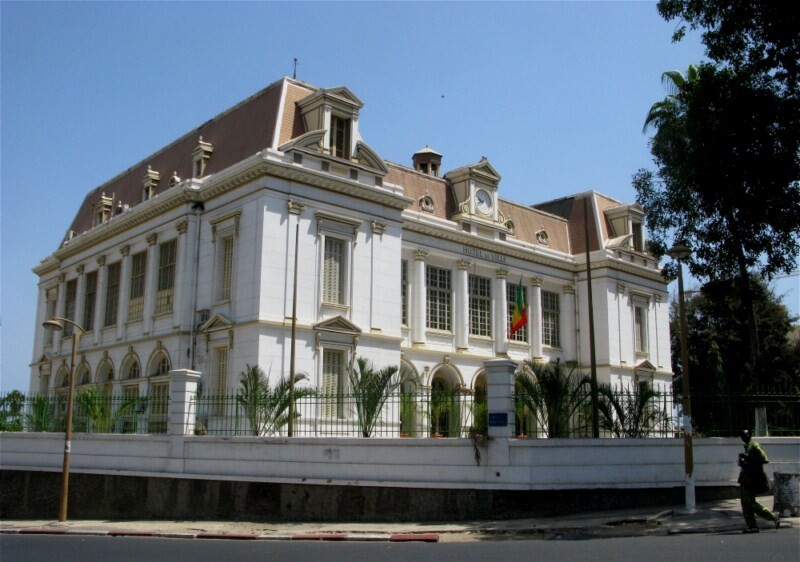
After a few hours, we were told we could now go onshore, but had to be back within two hours. The onshore leave is up to the master as he is ultimately responsible for everyone on board. We went for a stroll around the city and close to port is the Hotel de Ville de Dakar, built in 1914 and now functioning as the city hall.
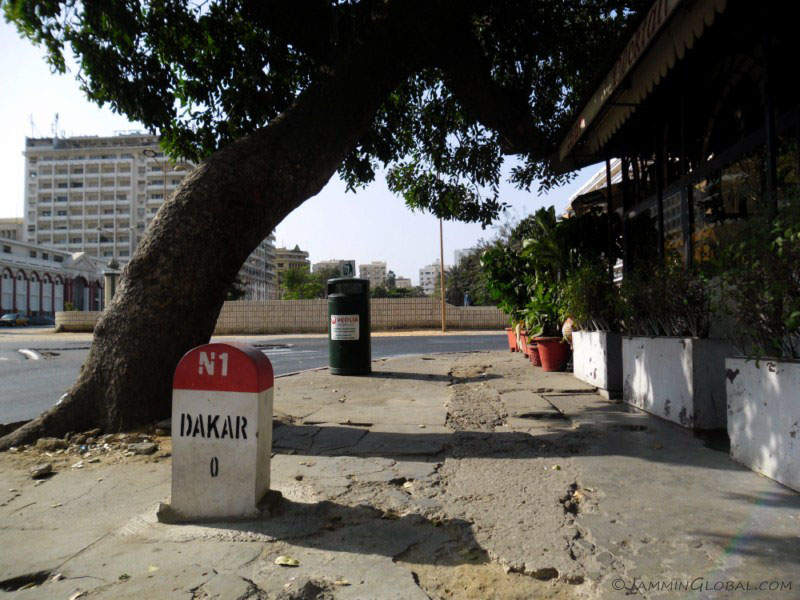
Mile marker zero of national highway 1 near the central square. I thought I would be coming back here on my way back south, but plans changed in the coming weeks.
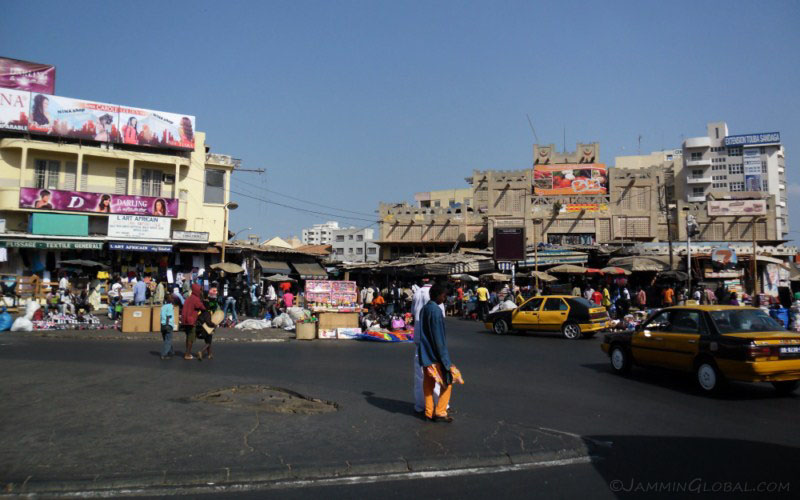
Jean wanted to get her sandals fixed, so we found a market that had some cobblers. As soon as we stepped on land, the touts were out enforce and were being ever so helpful and tagging along, expecting a payment for giving us directions. They were persistent in their offer to sell us perfumes but lots of no, thank yous finally did it. It's about being firm, but respectful.
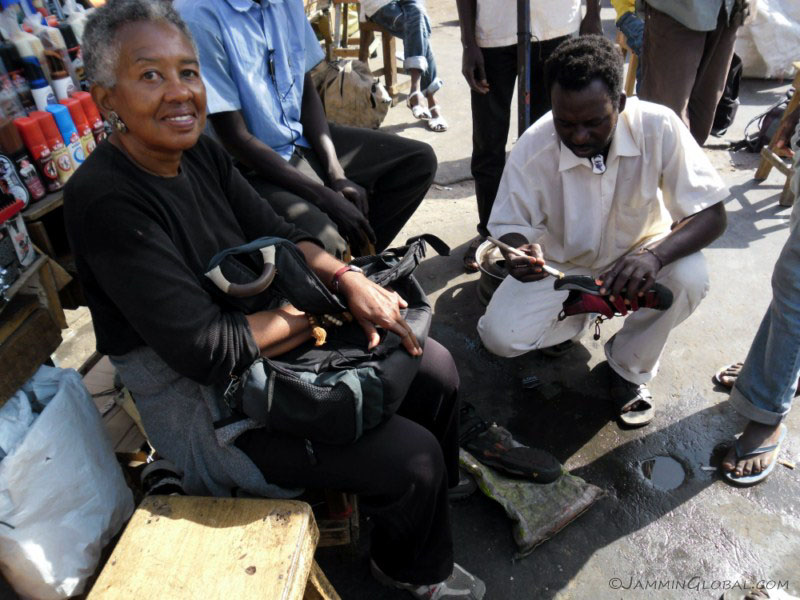
A thrilled Jean, getting her Keen sandals fixed up. She couldn't wait to tell her friends back home how she fixed these sandals for a few bucks, compared to the fifty or so the company would ask for repairing them back in the States.
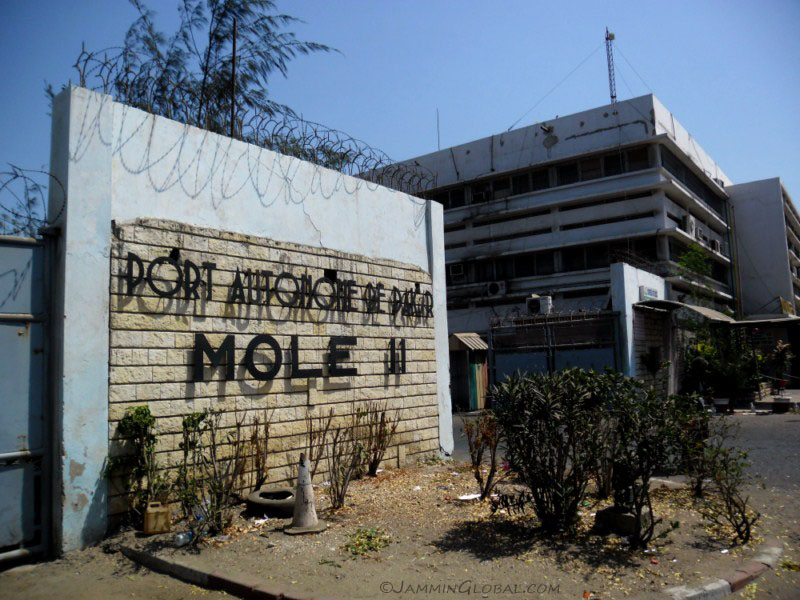
After a short walk around town, we headed back to the port.
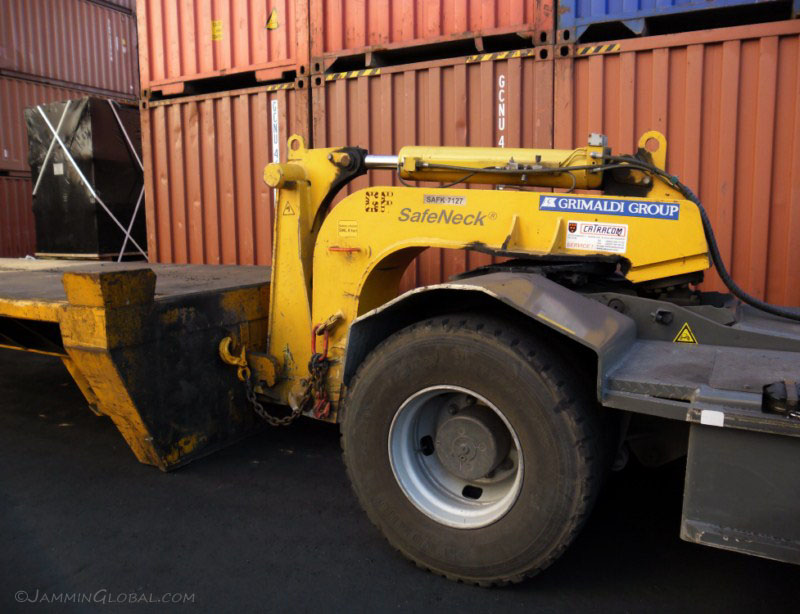
I was taking some shots around the port, like of this trailer neck and...
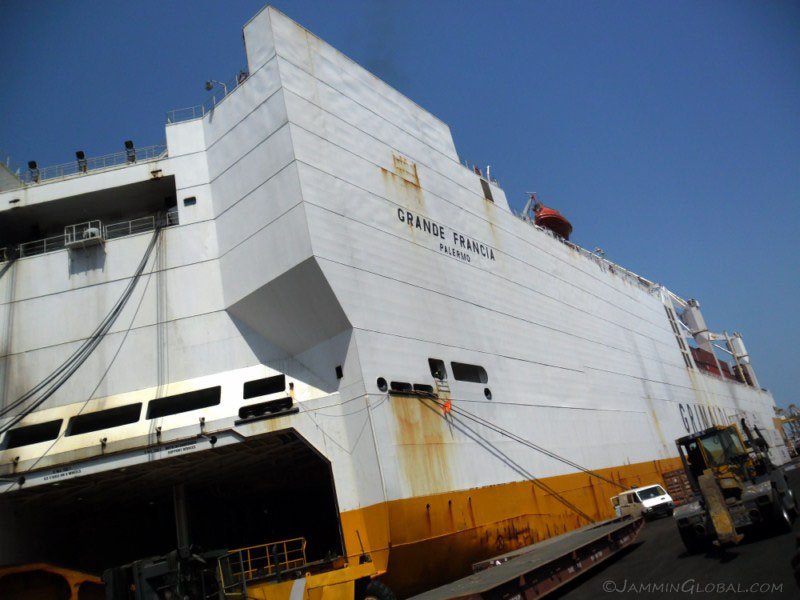
...a shot of the ship, unaware of the drama about to unfold.
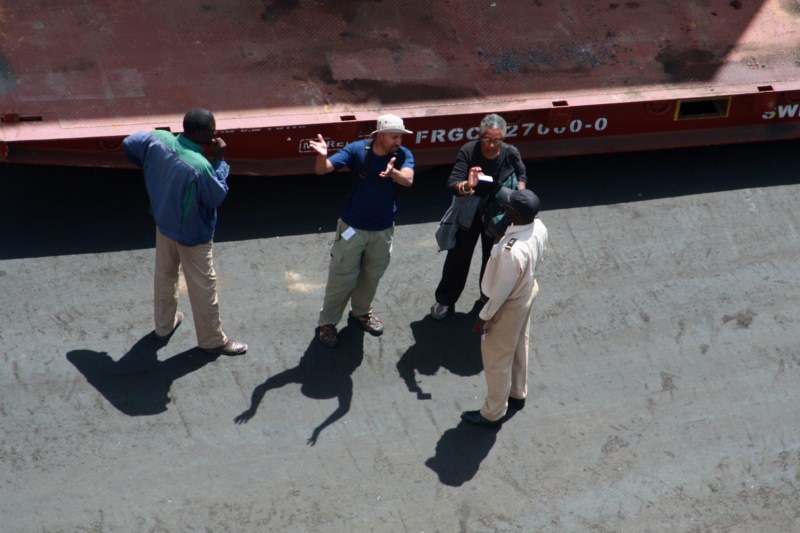
When I clicked the above shot of the ship, this port officer jumped out of his car by the ramp and informed us that it was illegal to take pictures in port and he 'could' possibly write us a ticket for this offense. With his phrasing and attitude, he indicated his corruption, meaning there was something else we could do to get out of this. Käthi took these nice shots from the top deck.
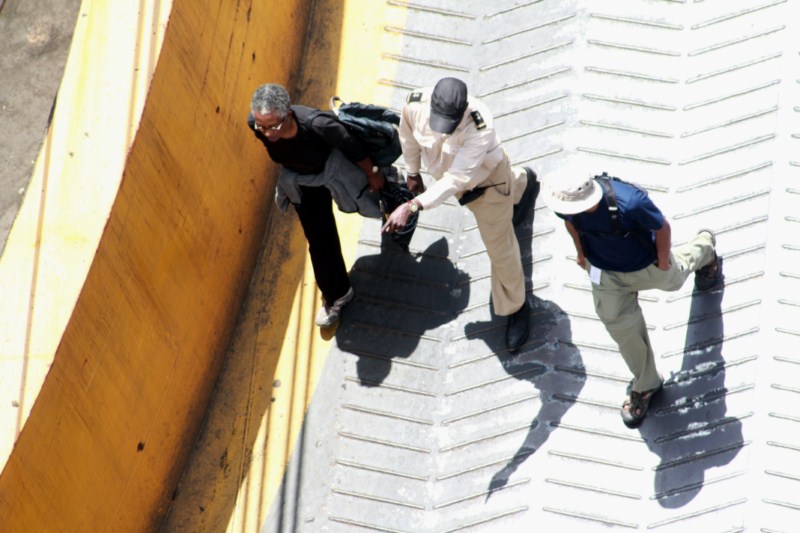
The port officer said we had to see the master to sort this out and put the fear in us that we had done something terribly wrong. We were not sure what was happening, but were glad to be walking back onto the ship, which is our territory, not his. He was telling us it was forbidden by international maritime law to take pictures in ports due to security issues, which probably has some weight to it, but we didn't have a problem at any previous port.
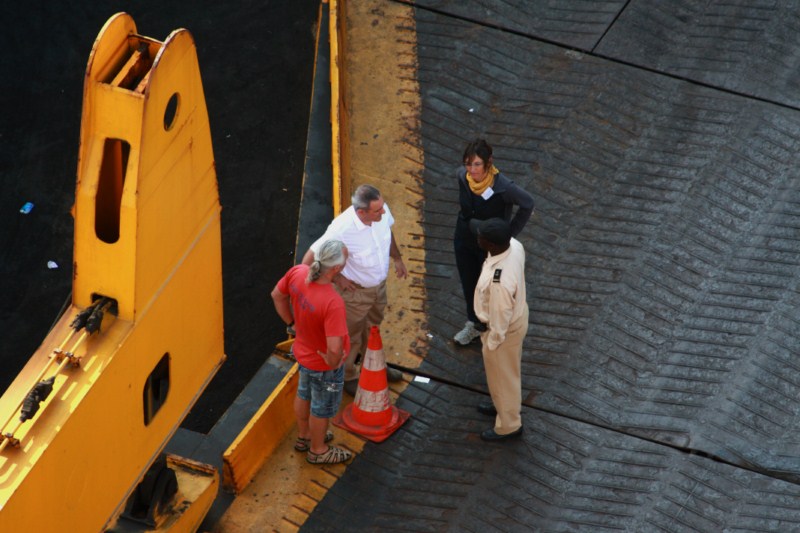
Earlier in the day, Franz and Sandra were caught for the same offense and this time, the master was already down on the ramp to save them from this sleazy official.
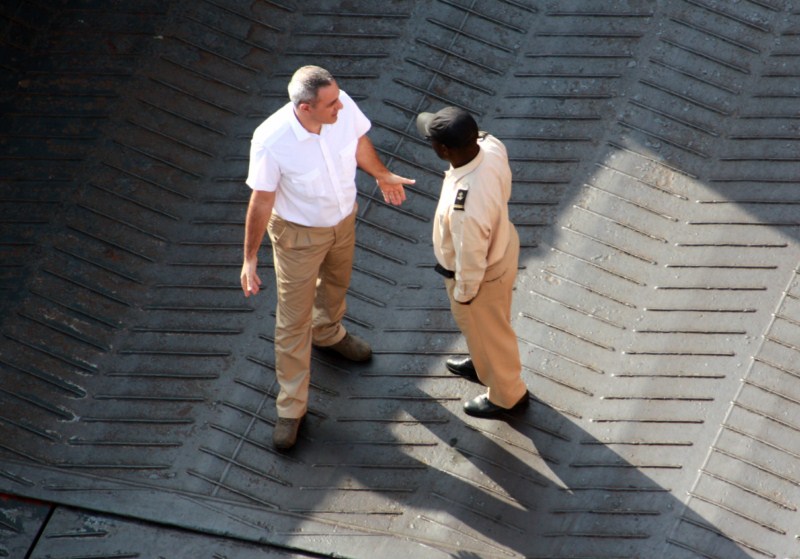
'Eh, please leave the passengers, alone, OK? What, you want more cigarettes and whiskey?' Excellent shot by Käthi, who was trying to get our attention and warn us before we took the pictures of the ship. So, when we got caught, this official made it up to the dining room and demanded to see the master, who had to smooth things over once again. We think he was just trying to get on board for a free lunch and perhaps some 'goods' from the master. We were initially stressed, but I soon saw what this was about and relaxed when the Chief Mate indicated to us that we were not at fault and this always happens. First taste of corrupt Africa.
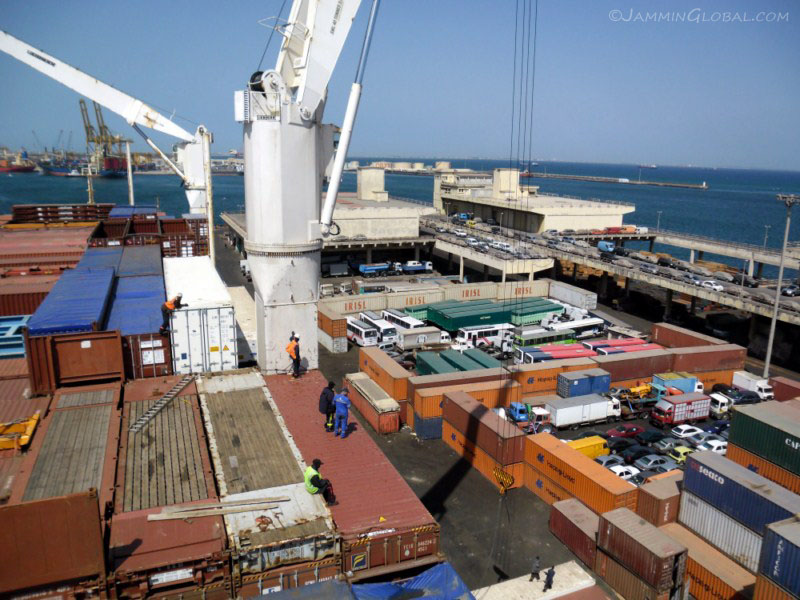
After lunch, we continued taking pictures from the ship. The crew didn't care and said not to worry about it. The beauty of ships like this is that they carry their own cranes so that they can visit less-developed ports that lack cranes to move containers on and off.
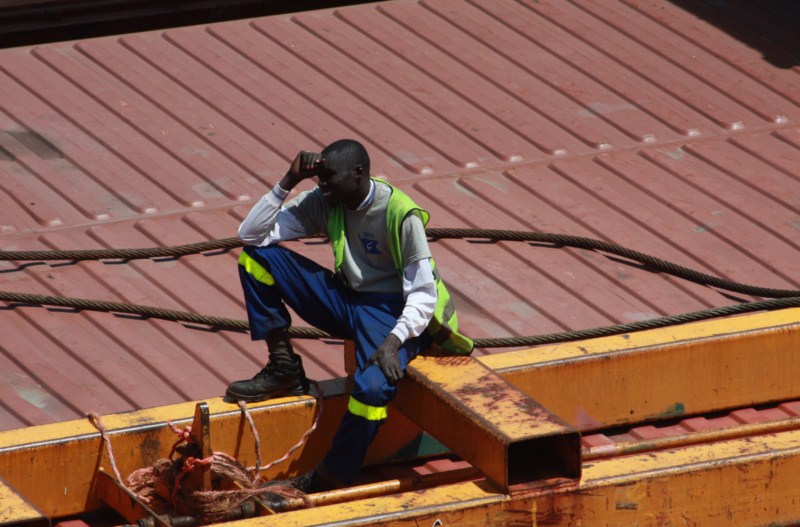
A Grimaldi port worker waiting to hook the cables onto the next container to be hauled up.
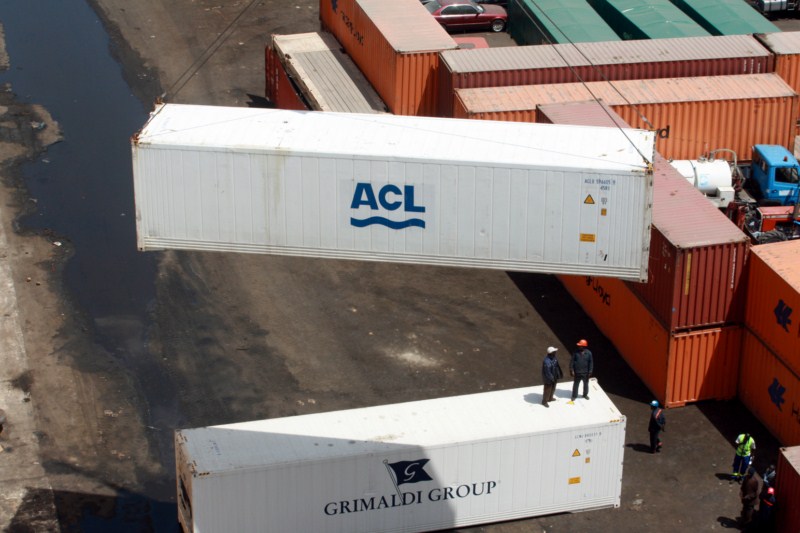
Up she goes, being held on by just four cables.
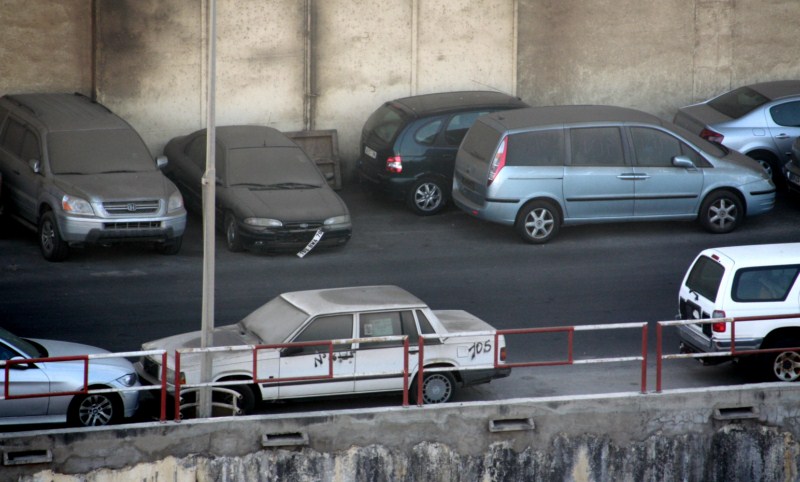
From the ship, we could see lots of cars lying around the port, collecting dust. The reason Grimaldi doesn't allow passengers to disembark with their vehicles at African ports is due to the extreme complexity of dealing with the customs officials (read as: too much corruption to deal with). When will they realize that they're just strangling their own people and tourism with such draconian ways of running things. In 2010, Grimaldi finally managed a deal with the customs at Dakar to allow personal vehicles to disembark and for most of the year, I was planning to use this option and get down in Dakar. However, a month before I was planning to sail from Buenos Aires, Grimaldi informed me that they no longer offered this option and I could only get down in Europe now. This was because a few Belgian bikers who got down in Dakar didn't have the patience to process through the hours long paperwork and simply just rode out of the port and illegally crossed Senegal. This left Grimaldi with the headache of illegally importing motorcycles into the country and they had to pay a hefty fine. So, no more nice route from Argentina and Europe to Senegal for overlanders. These Belgians apparently also made things worse for travelers in other parts of Africa.
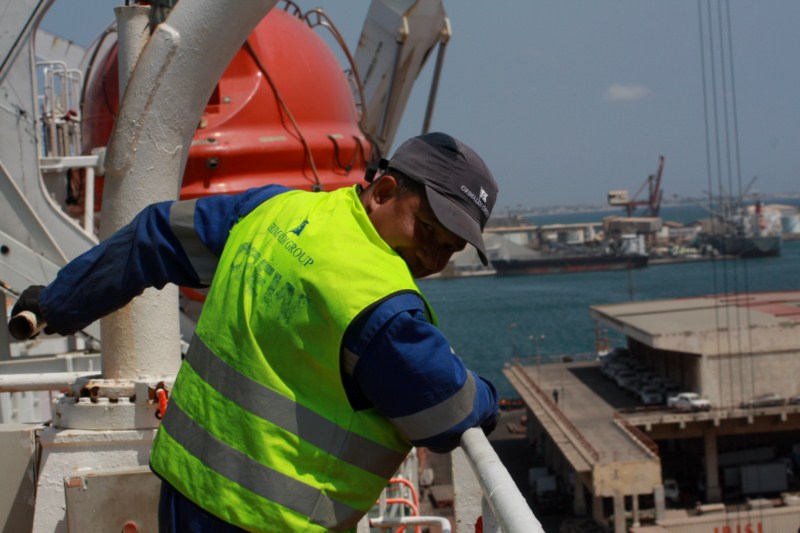
Officer Mantilla supervising the removal of garbage from the ship.
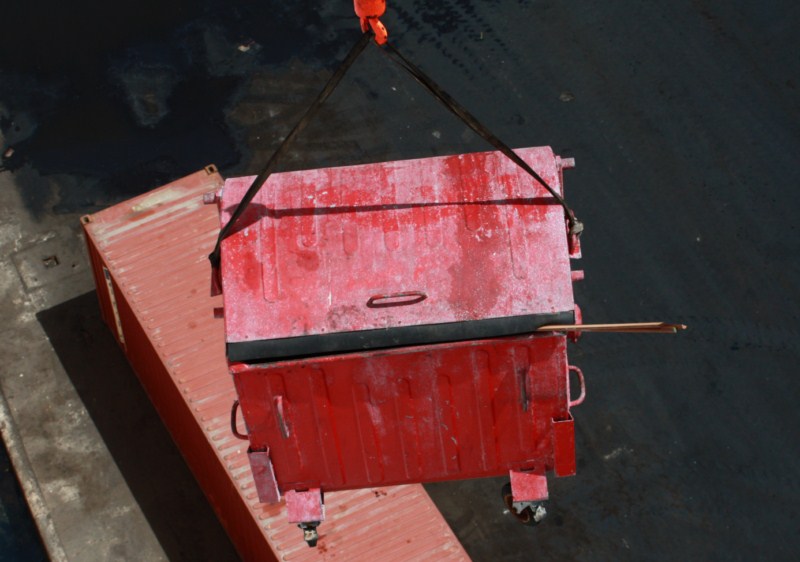
We saw another communique from the head office informing the ship to clear out the garbage area before landing in Europe, as the German port officials were very strict about letting in dirty ships that might be bringing in diseases. We also saw lots of international maritime law notices in the kitchen area informing of pollution controls, where now it is banned to dump plastic waste at sea (finally) and food waste can only be dumped a certain number of miles from shore. However, they still allow packaging and crates to be dumped way out from shore.
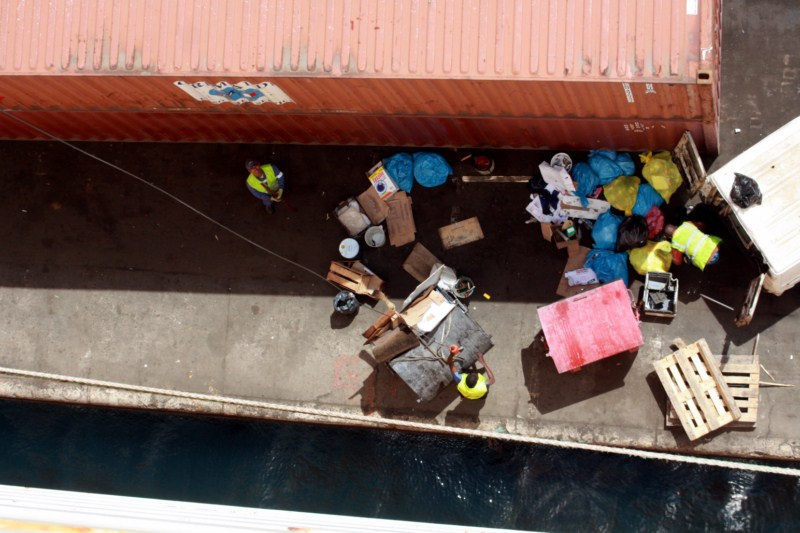
The ship's garbage being collected on shore.
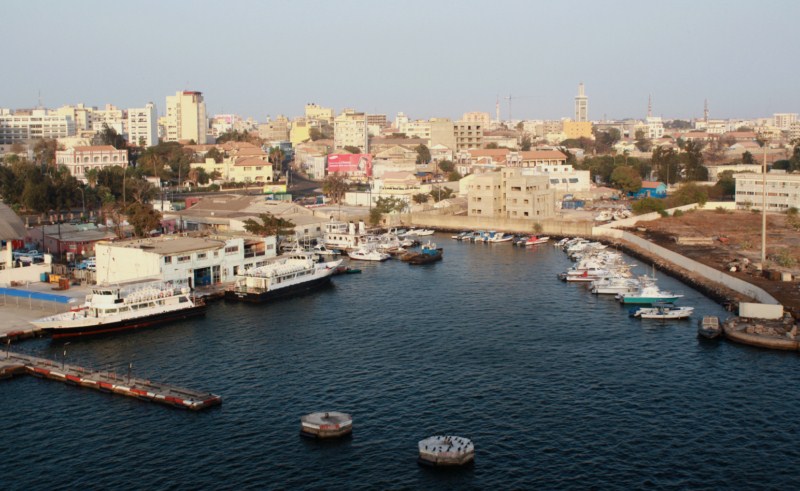
After an interesting day in Dakar, it was time to set sail for Europe. I hoped I would be coming back through here on the bike in the next few weeks, but alas, plans changed.
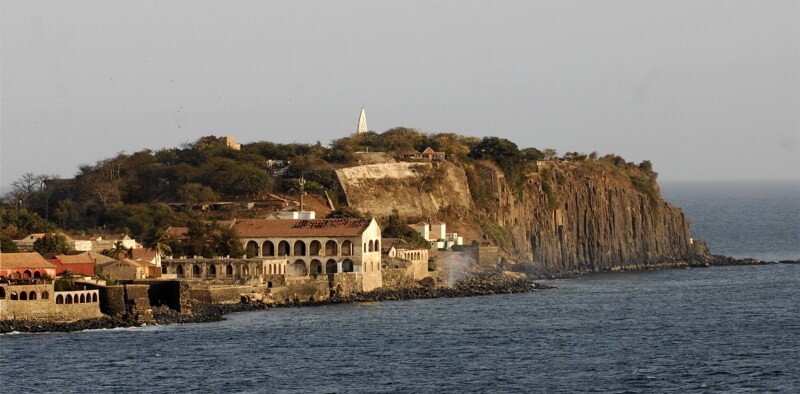
A closer look at Gorée Island on our way out of Dakar.
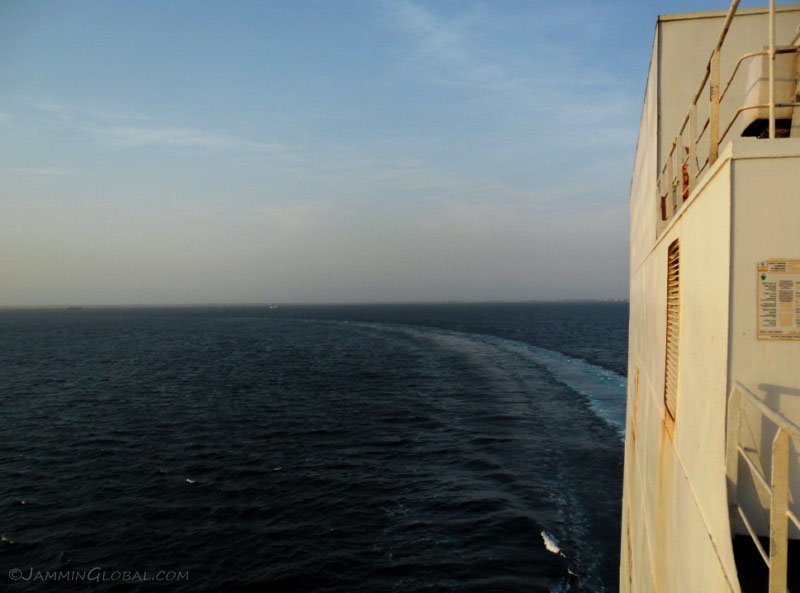
Powering around Cap-Vert and turning north for Europe.
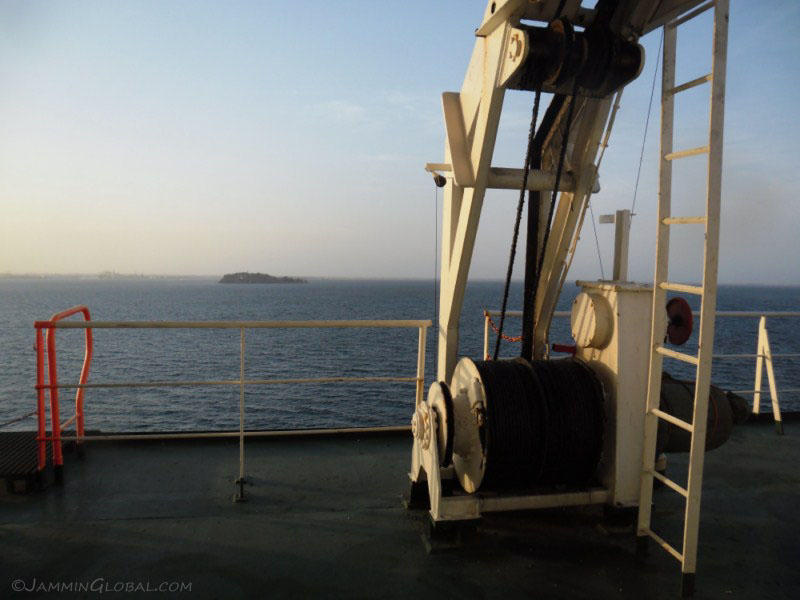
A parting shot of Gorée Island with Dakar in the background. From here, it would be another 8 days till landfall in Germany.
Next: Grimaldi, Part 3: Engine Room and Landing in Europe
Previous: Grimaldi, Part 1: Buenos Aires up the Brazilian Coast